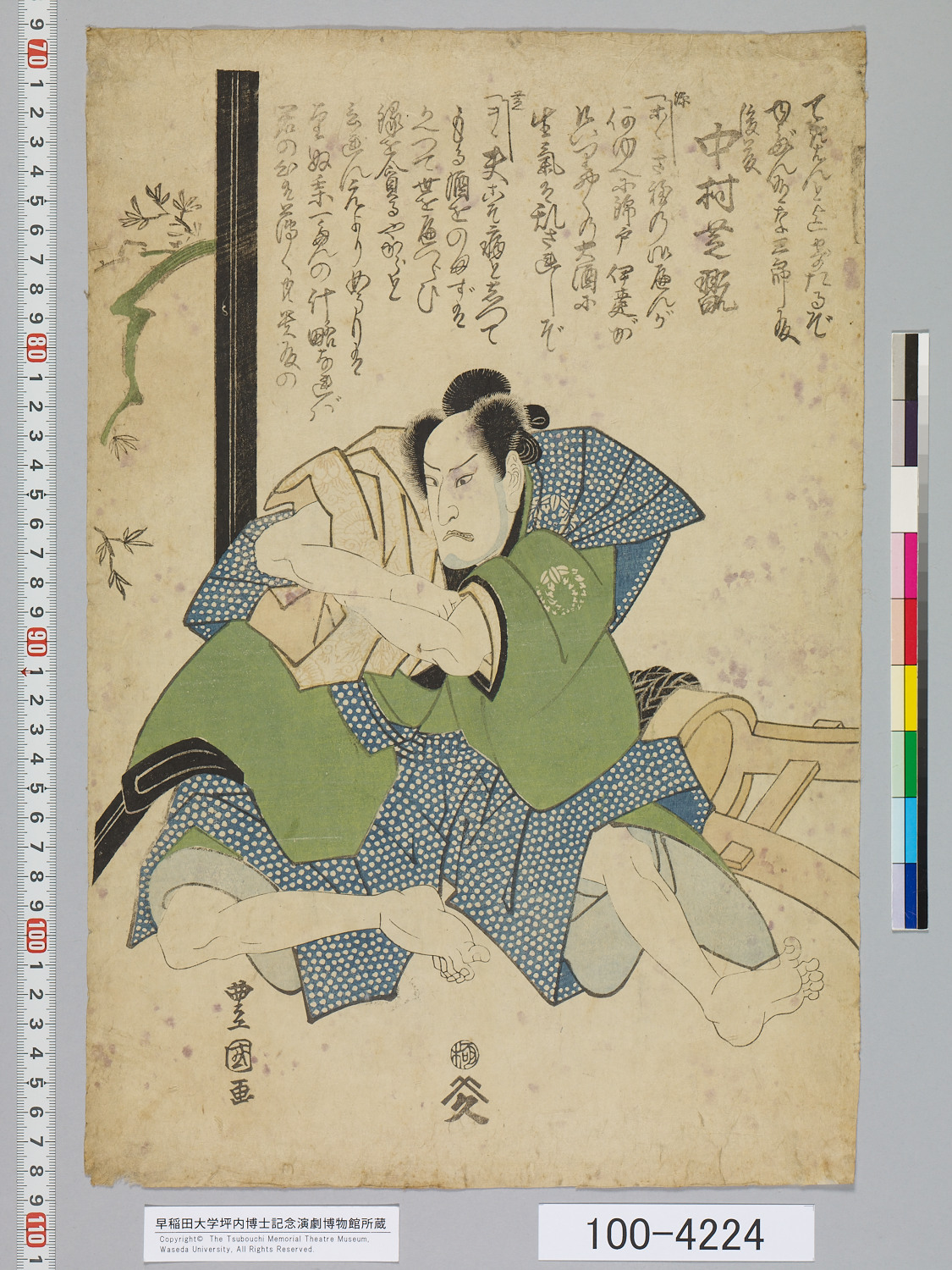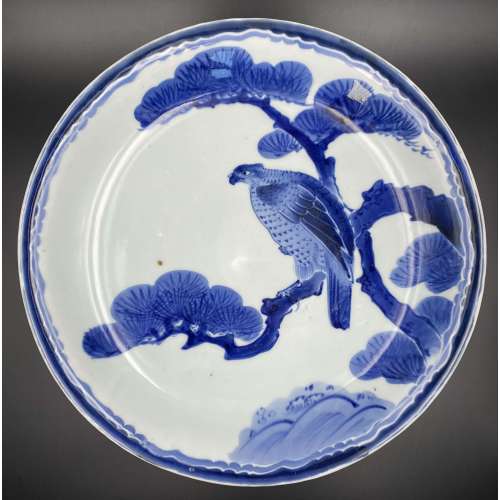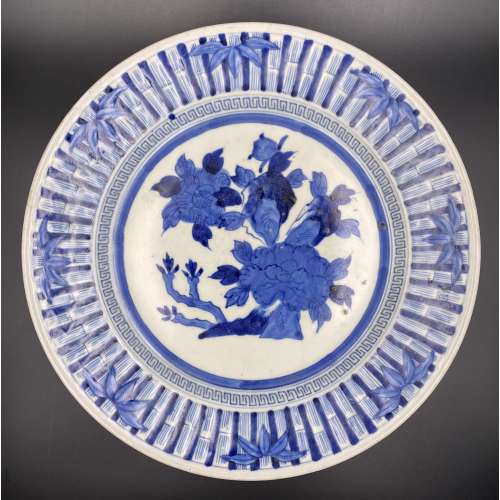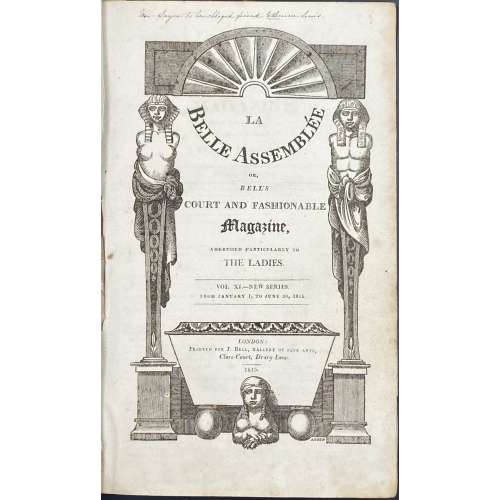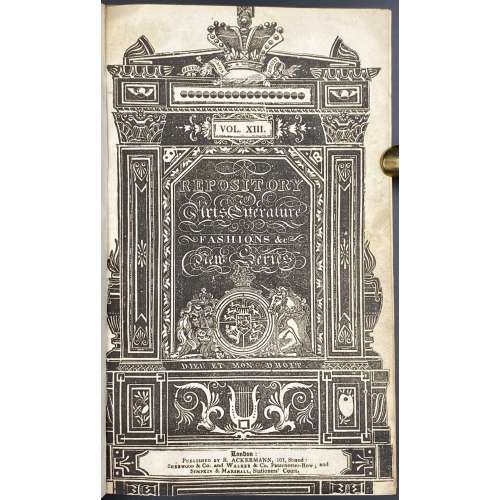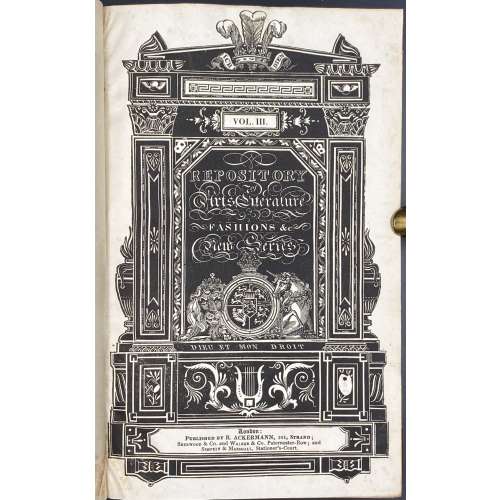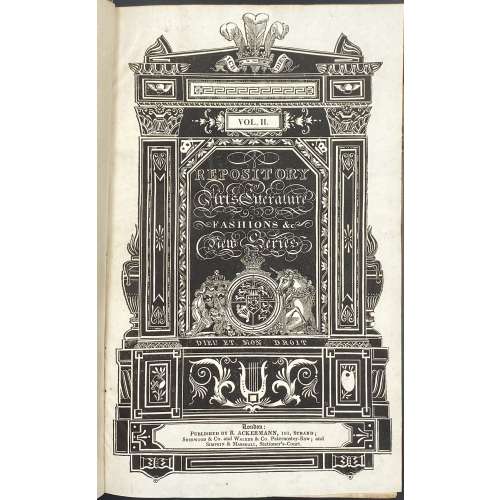Aioi-no-Matsu – The Paired Pines of Takasago and Sumiyoshi
The Aioi-no-Matsu refers to two pine trees growing separately but intertwined at the roots, representing an unbreakable union.- The Takasago pine (高砂の松) grows in Harima Province, while the Sumiyoshi pine (住吉の松) stands in Settsu Province.
- Though physically distant, these trees are spiritually connected, like Jō and Uba, the aged couple who embody their spirits.
- The phrase "The wind that blows through Takasago reaches Sumiyoshi" symbolizes the continuity of love and harmony across time and space.
Aioi-no-Matsu in the Noh Play Takasago
The Noh play Takasago, attributed to Zeami, popularized this imagery.- Jō and Uba appear as an elderly couple raking pine needles, revealing themselves as the spirits of the Aioi-no-Matsu.
- The play conveys the theme of eternal harmony between husband and wife, making Aioi-no-Matsu a symbol of auspicious blessings for weddings and longevity celebrations.
Symbolism in the Print
This print incorporates traditional symbols of longevity and prosperity:- A minogame (蓑亀, "straw-cloaked turtle"), representing immortality, rests near the shore.
- A crane (鶴, tsuru), a symbol of marital fidelity.
- The rising sun over the ocean represents renewal and hope for the coming year.
- Jō and Uba’s presence under the Aioi-no-Matsu (Paired Pines) evokes the traditional New Year’s wish for long life and unity.
- The minogame and crane further reinforce New Year’s themes of prosperity and fortune.
Comparison to MFA Boston Prints
This print shares strong visual and thematic connections with two works attributed to Hokusai in the MFA Boston collection:- Accession No. 21.10269 – "Jō and Uba, the Spirits of the Pine Trees of Takasago and Sumiyoshi"
- Depicts the couple sweeping pine needles, reinforcing themes of domestic harmony and renewal.
- Includes a minogame and a flying crane, similar to this print.
- Accession No. 21.7869 – Another version of "Jō and Uba"
- Shows Jō and Uba standing, gazing at the sea, in a more expansive composition.
- Features a large pine tree, crashing waves, and a red sun, mirroring the background elements in this print.
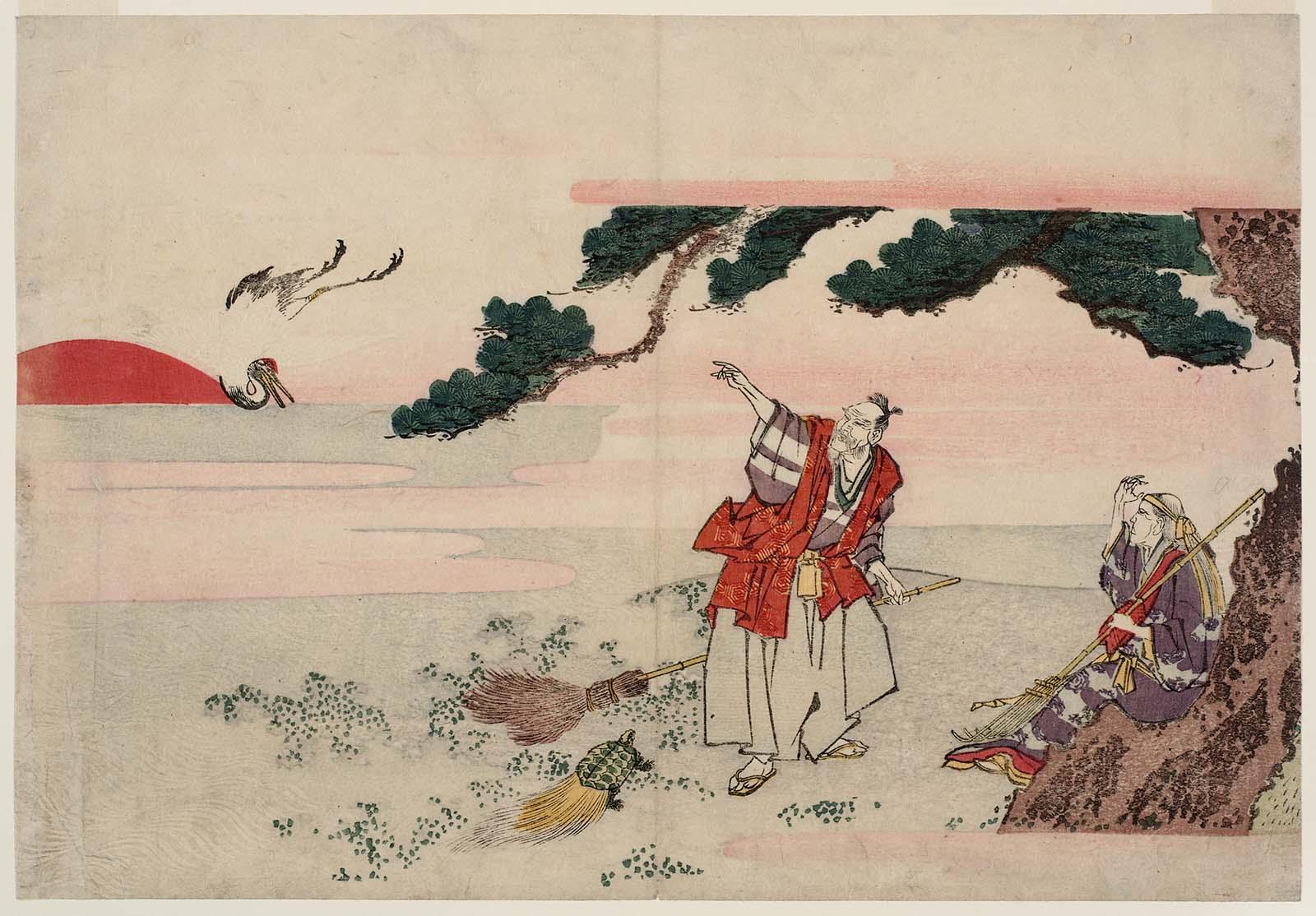 MFA-B № 21.10269 |
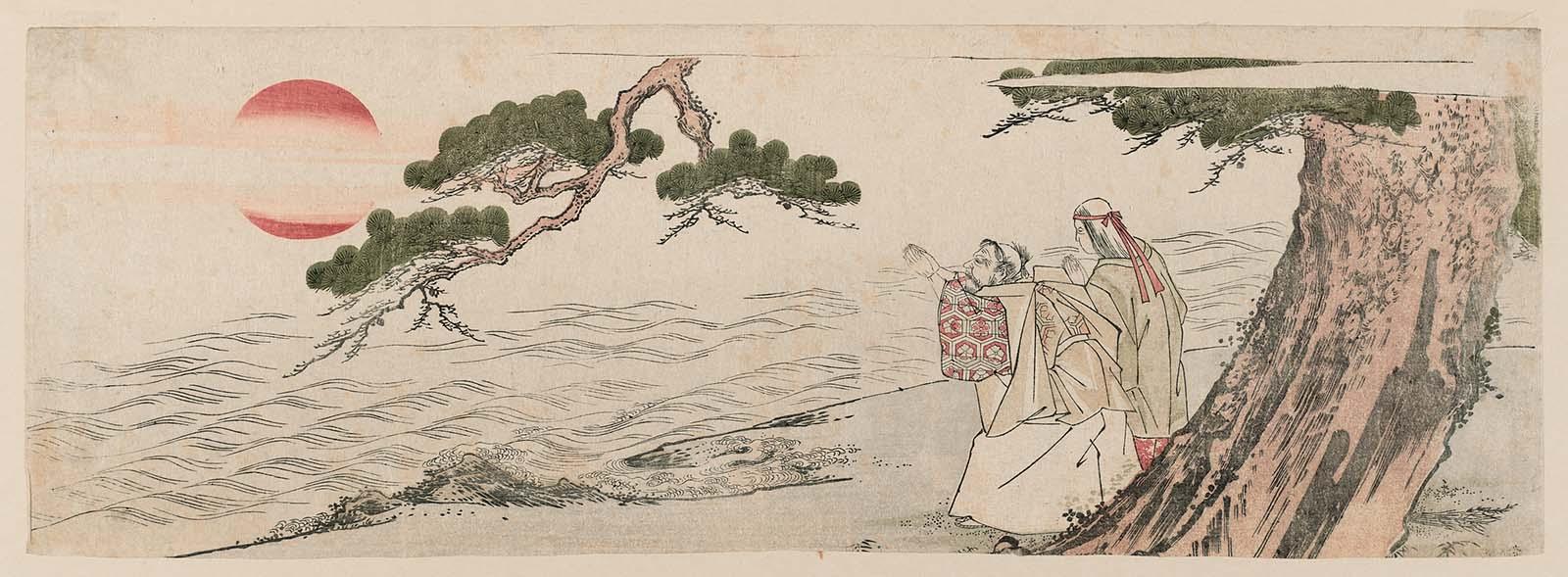 MFA-B № 21.7869 |


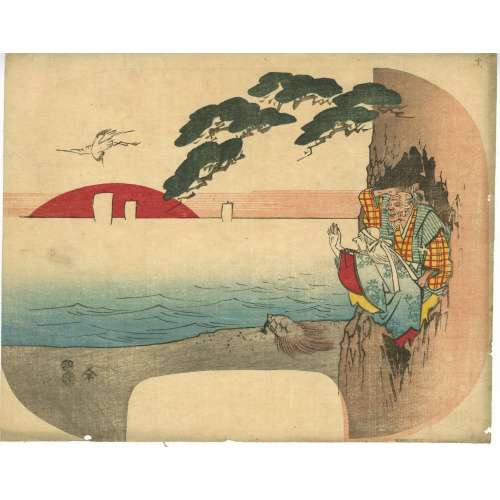

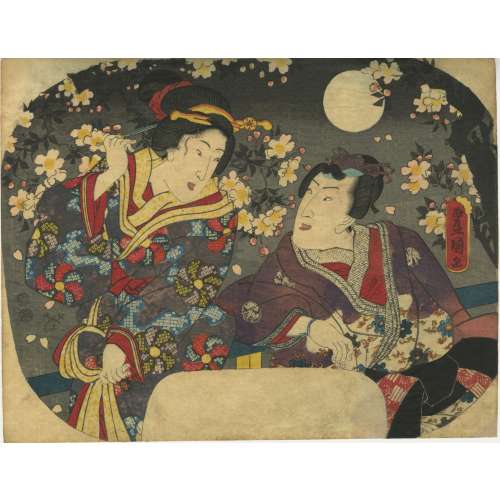
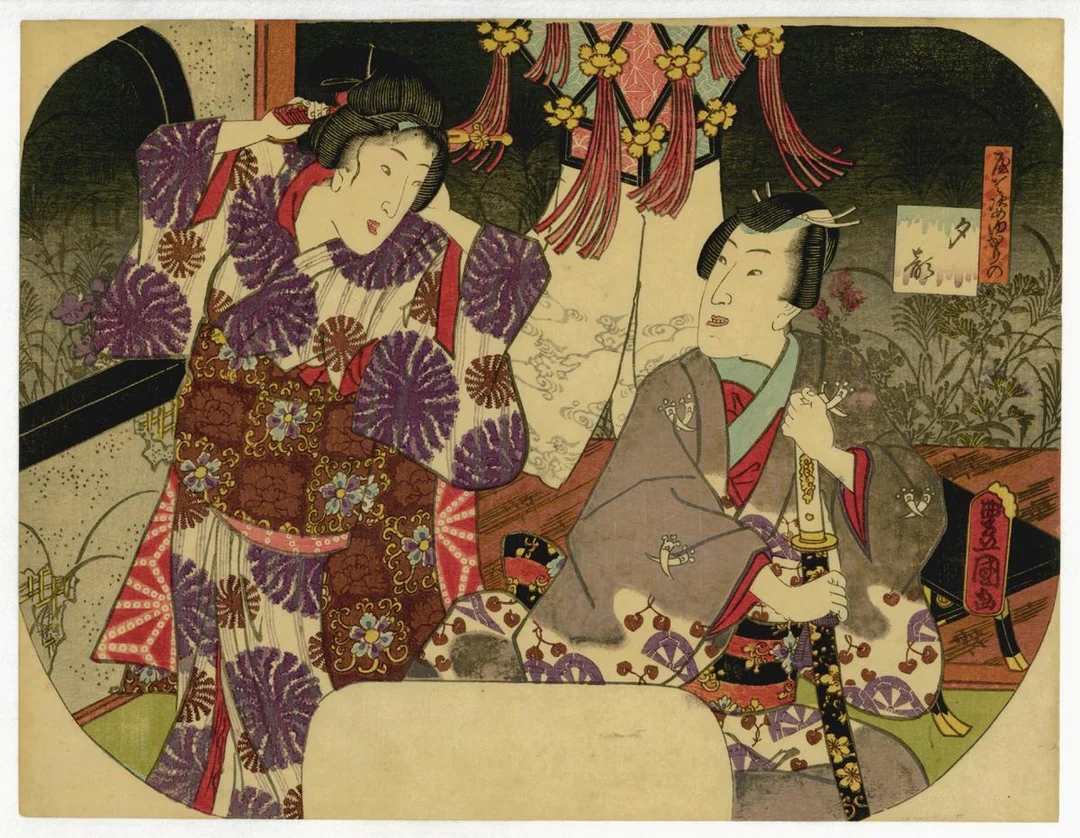
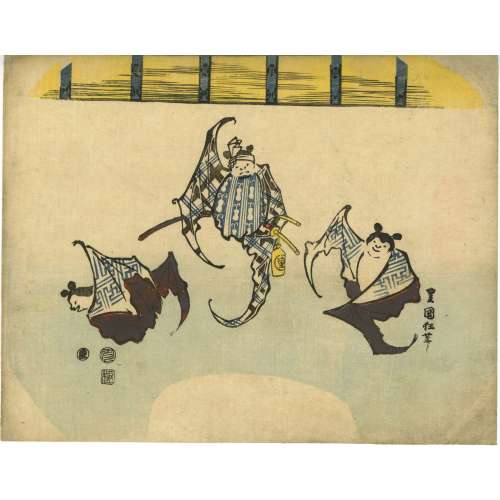
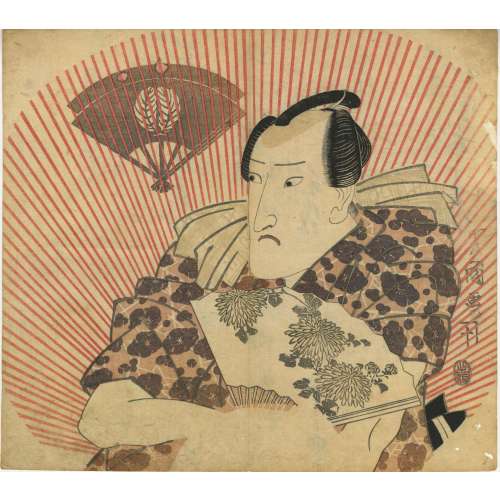
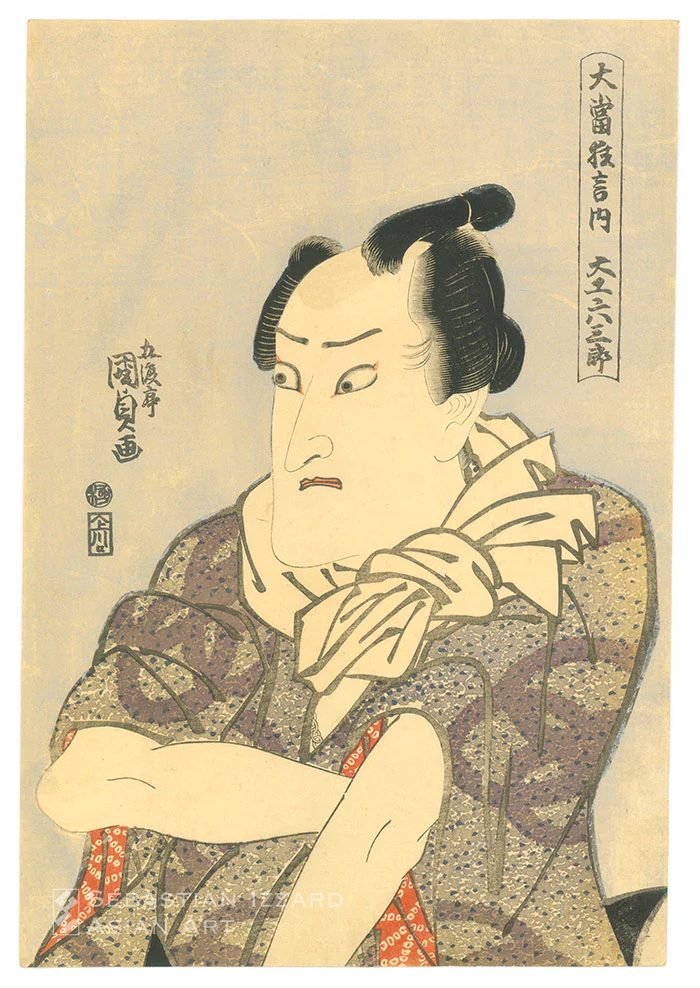
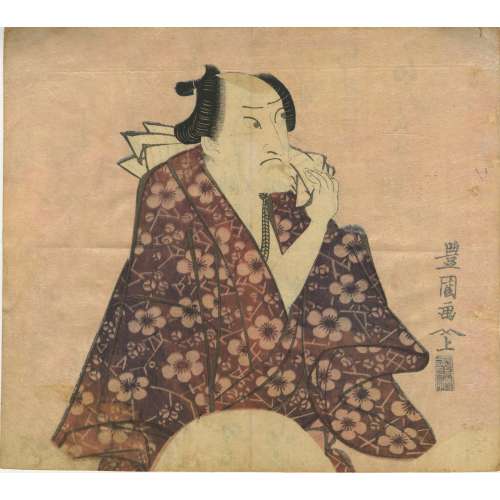
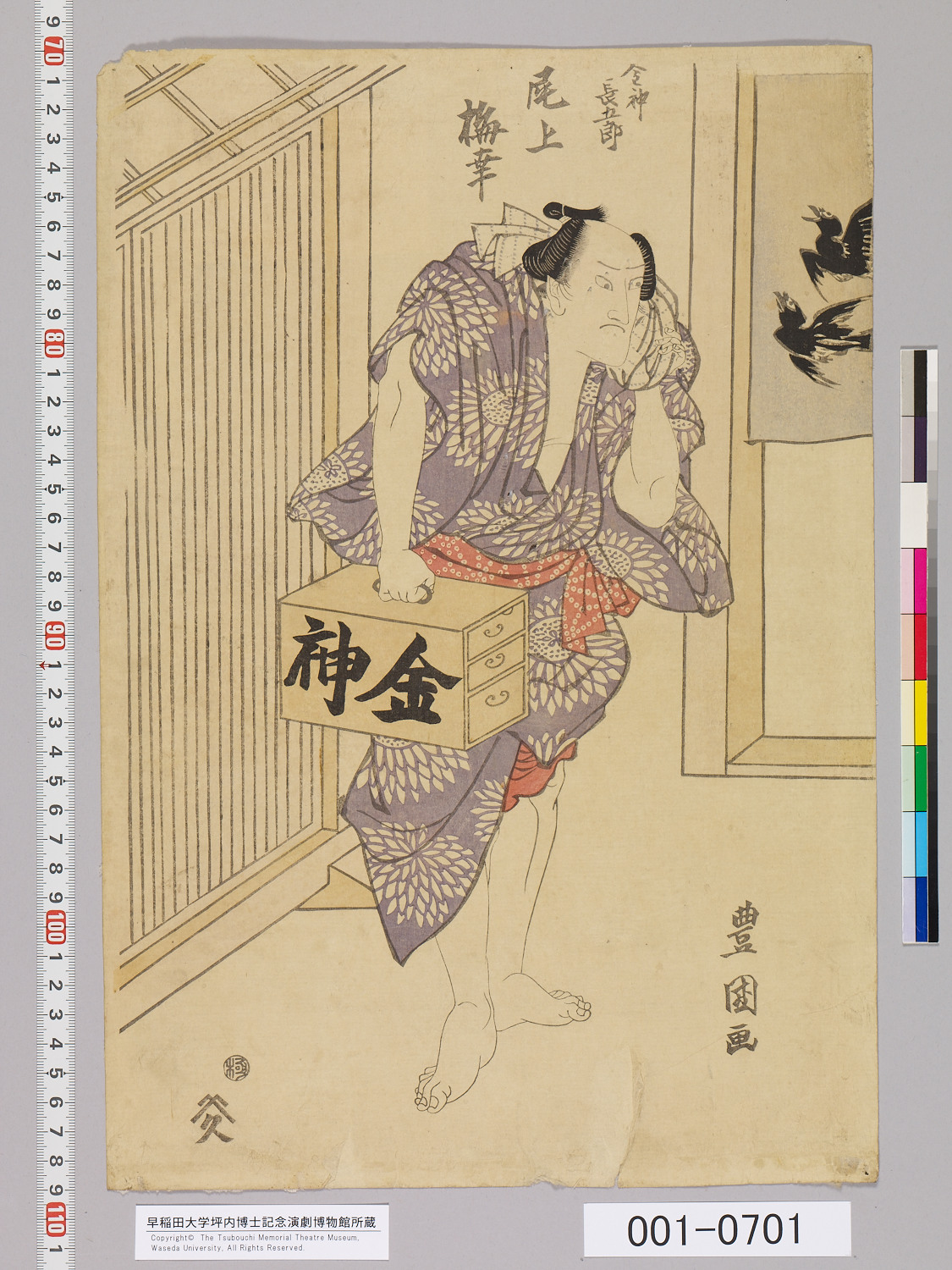
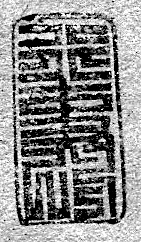

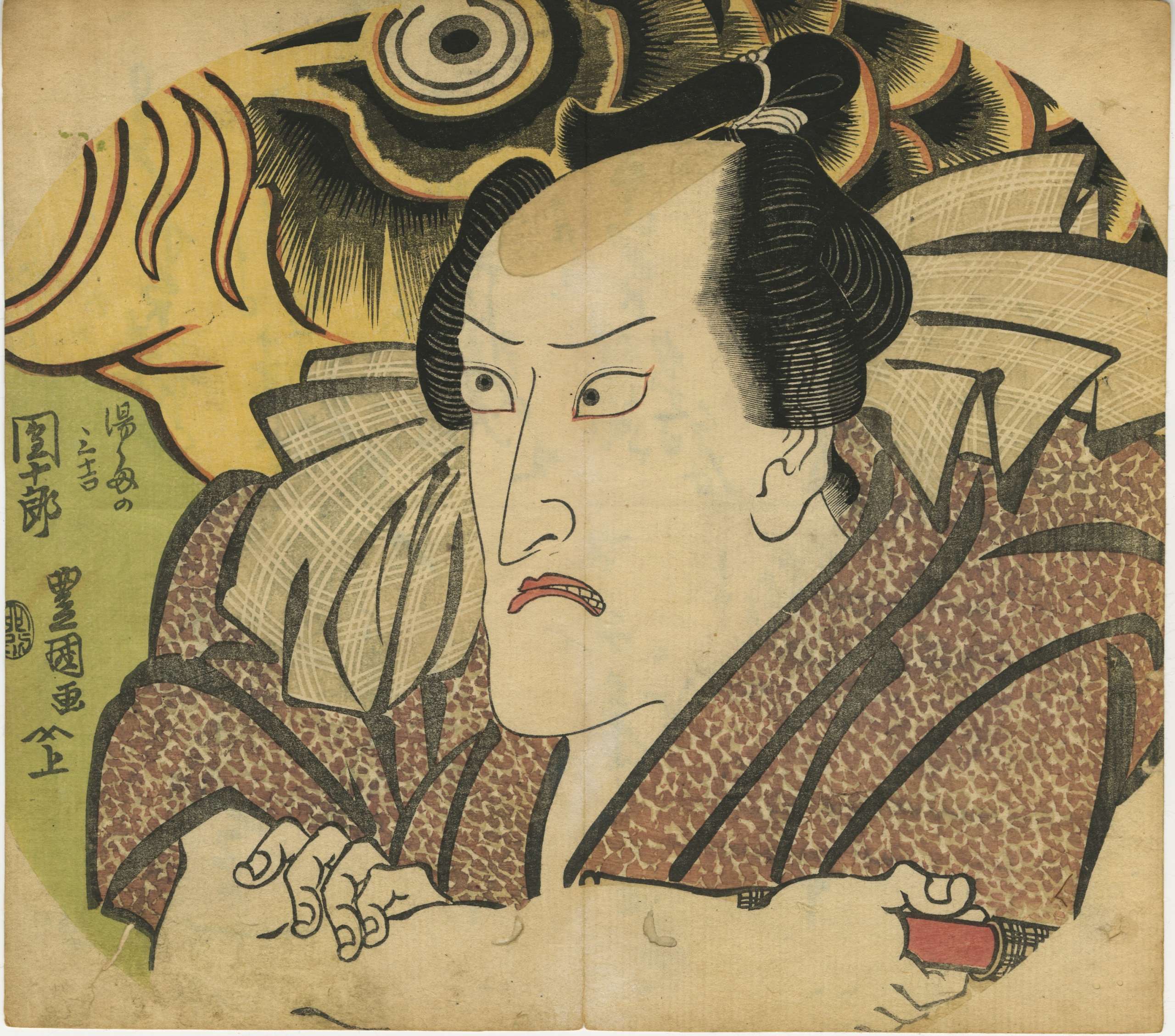
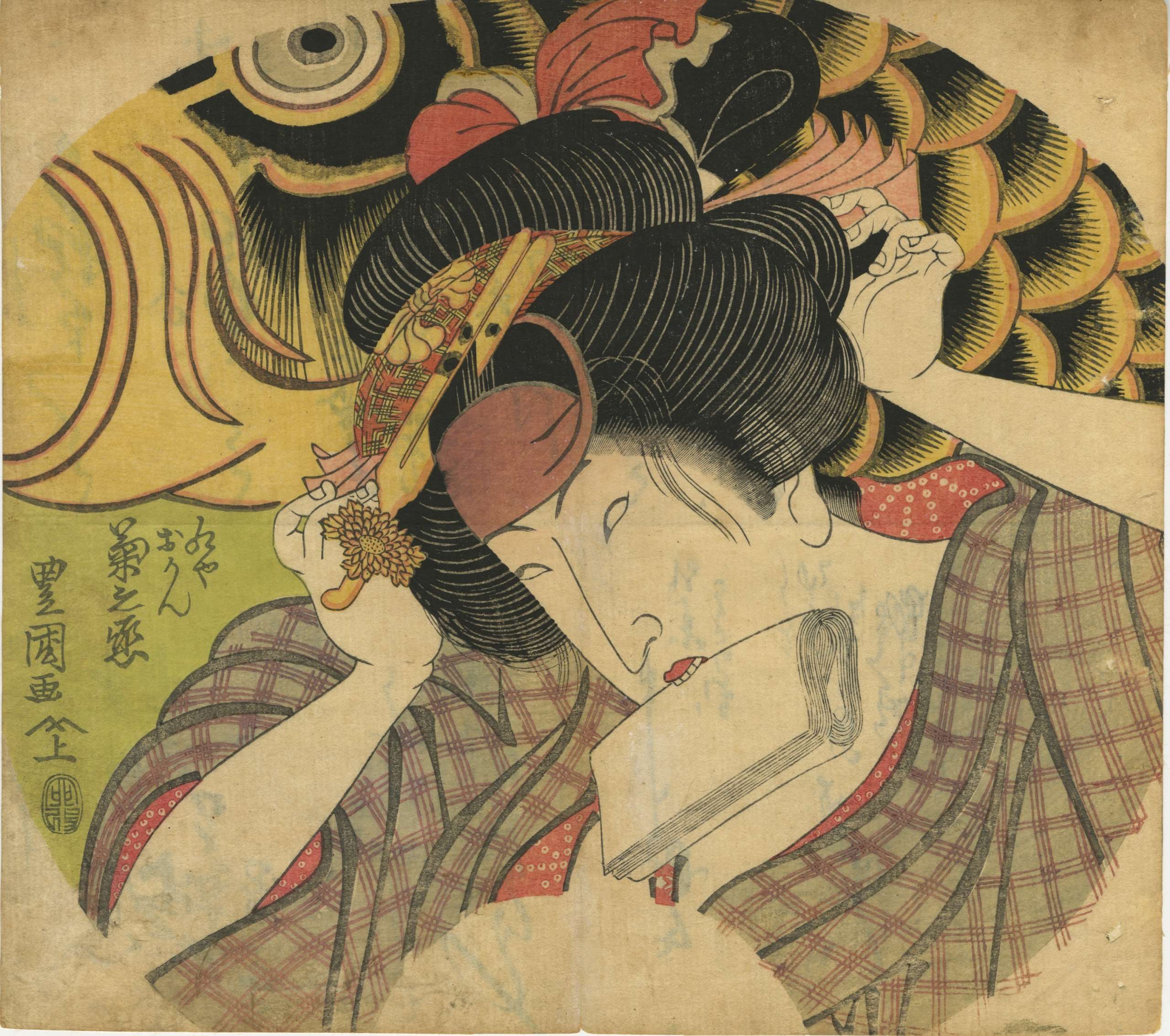
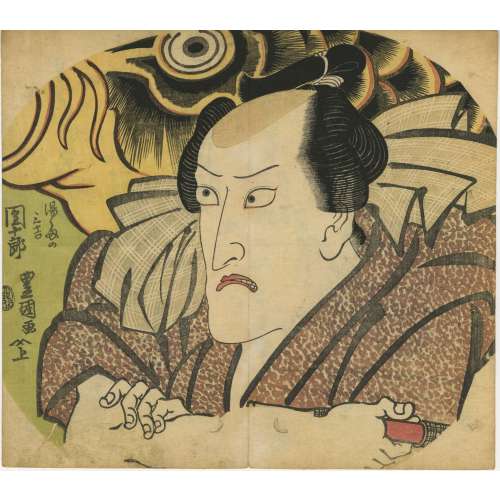
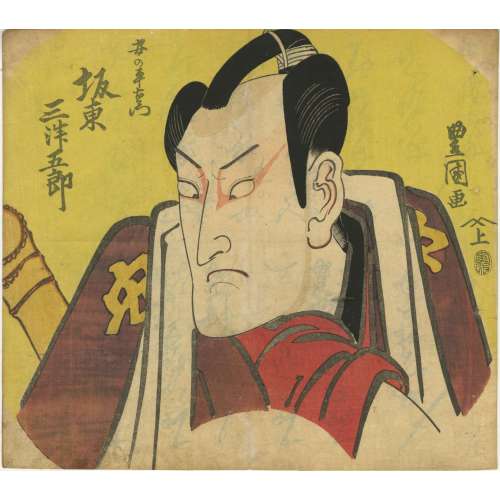
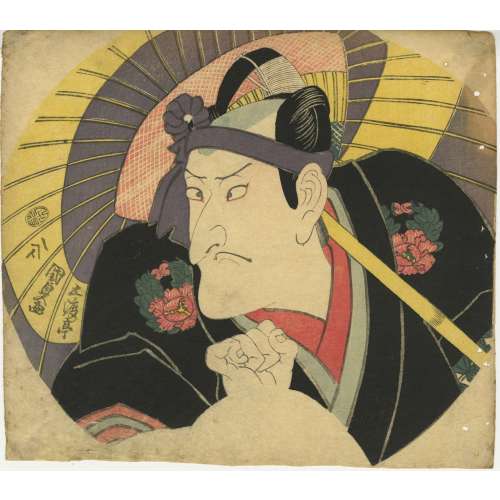
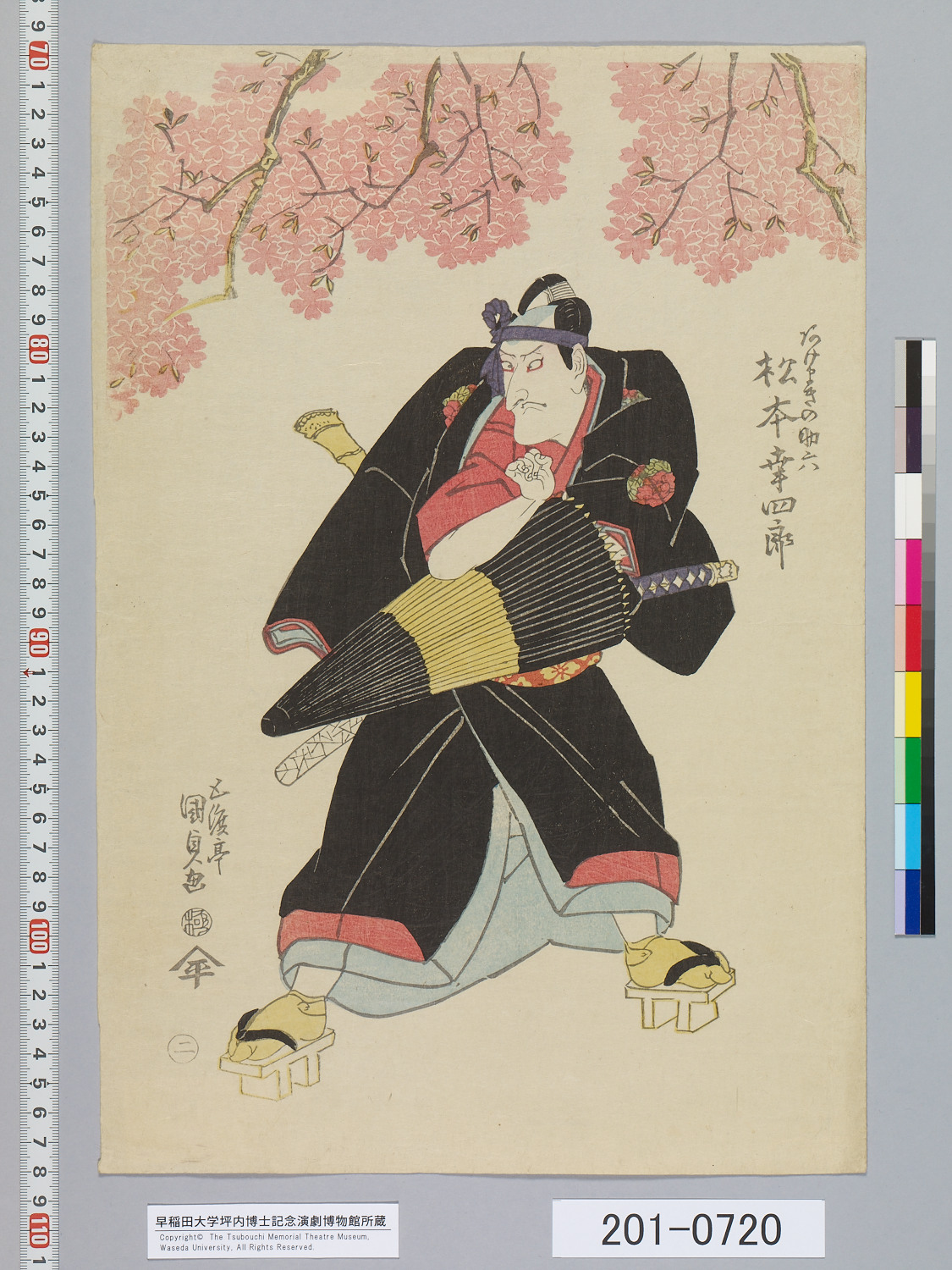
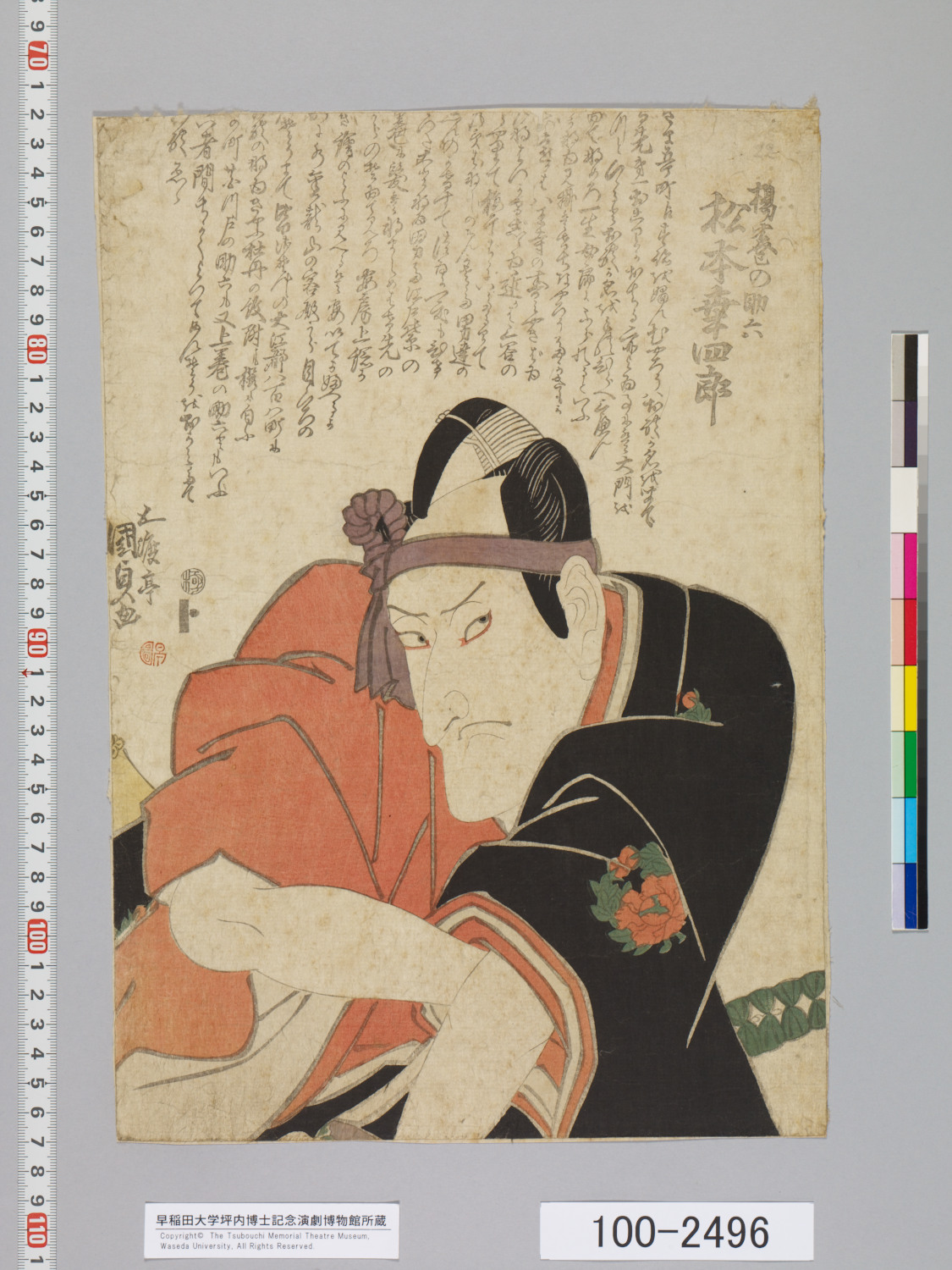

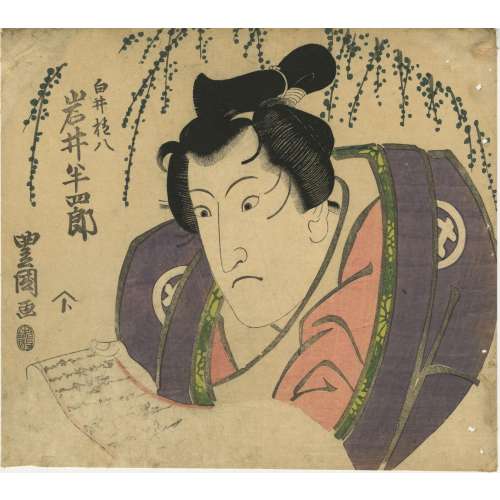
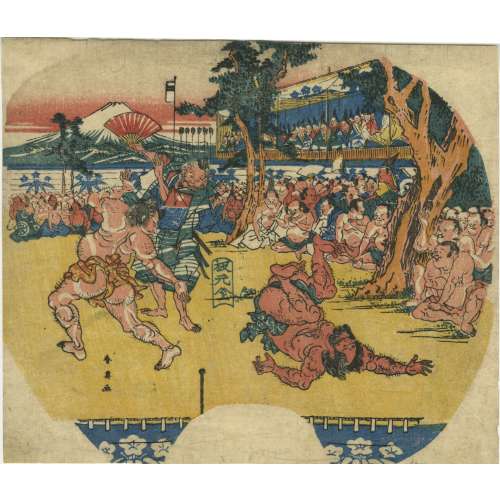
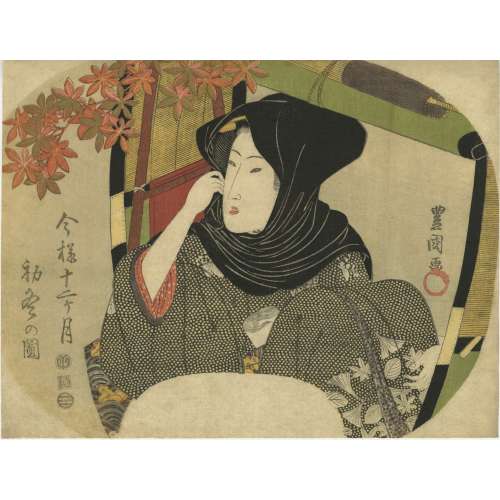
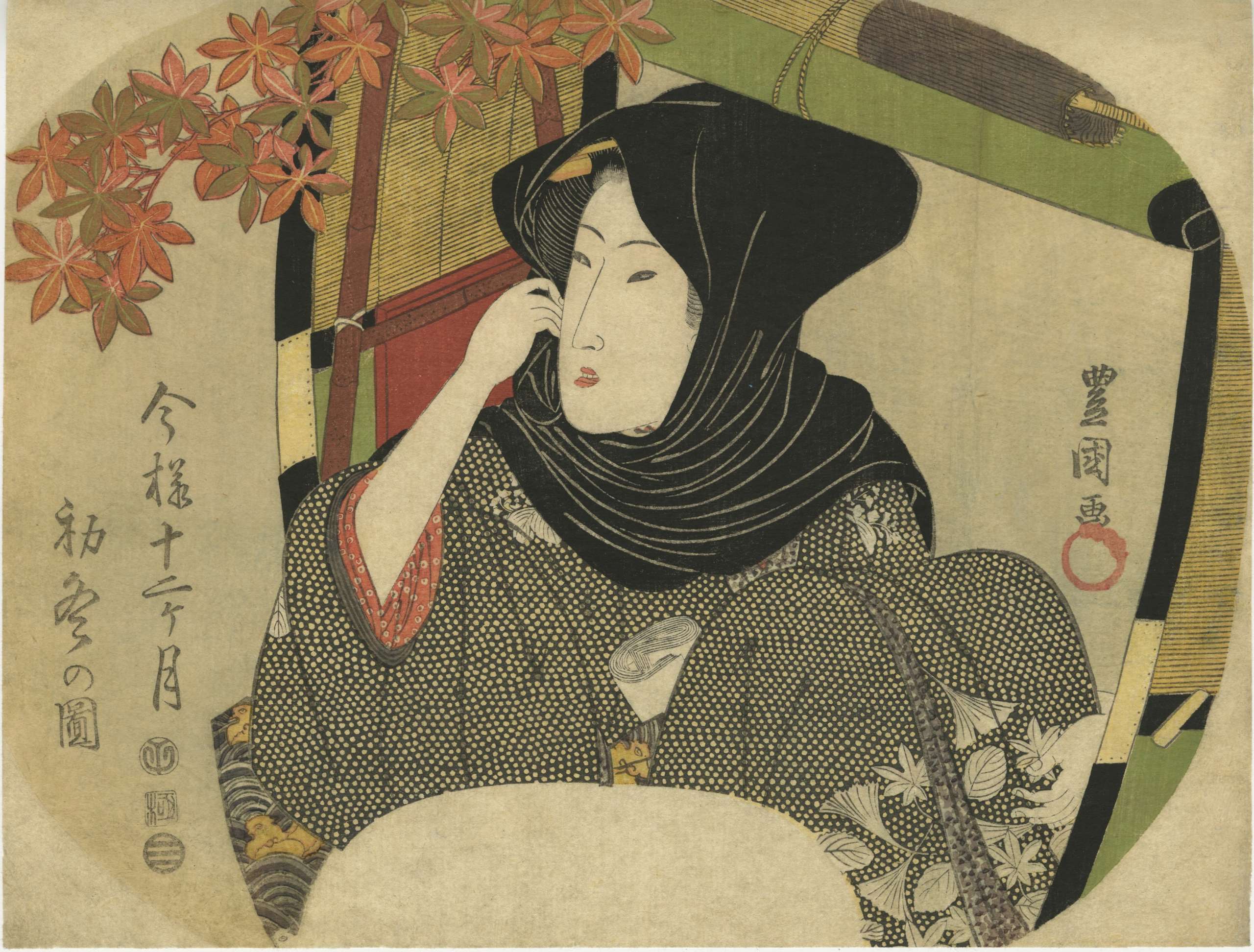

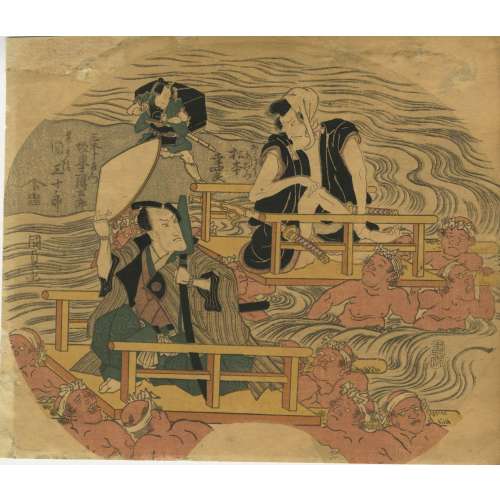
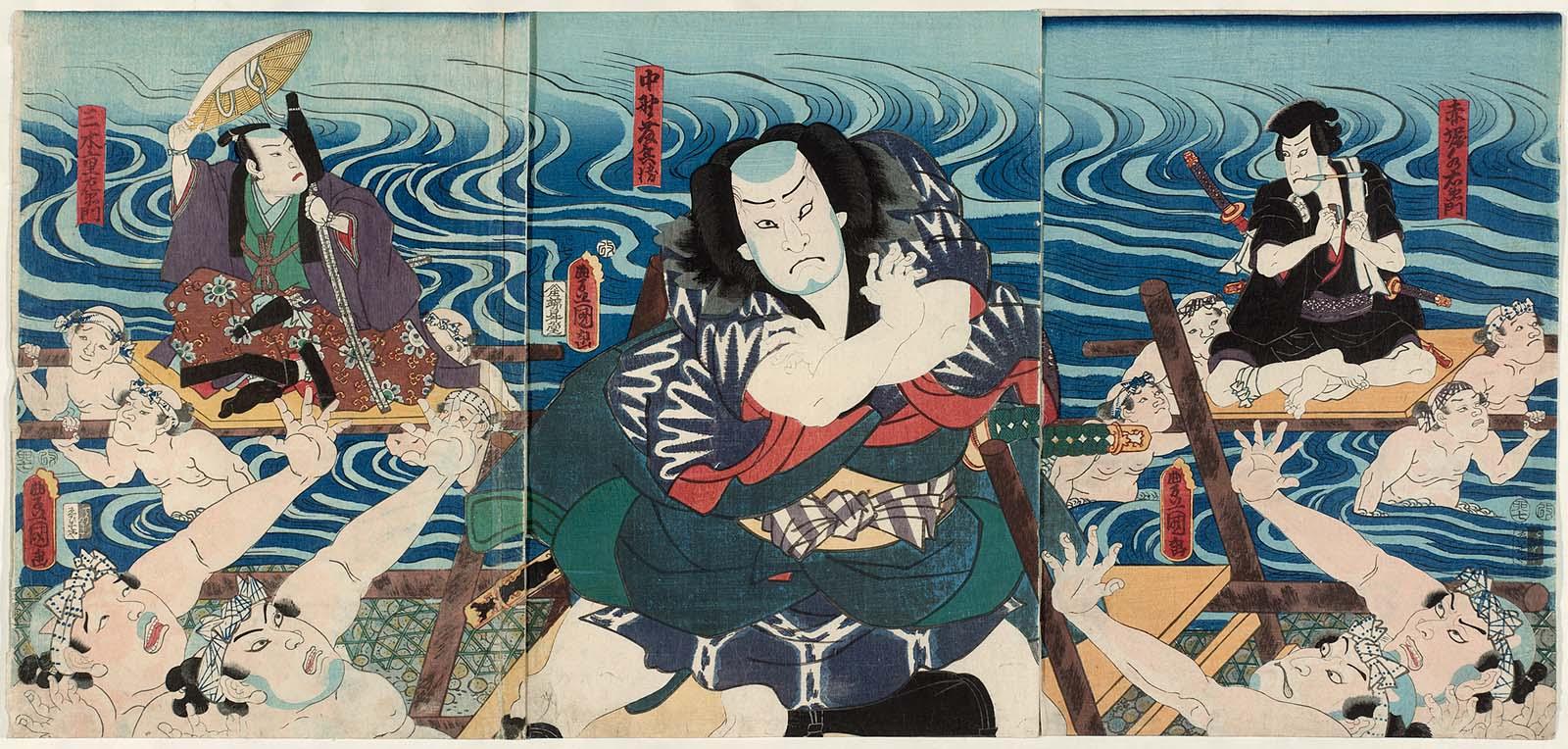
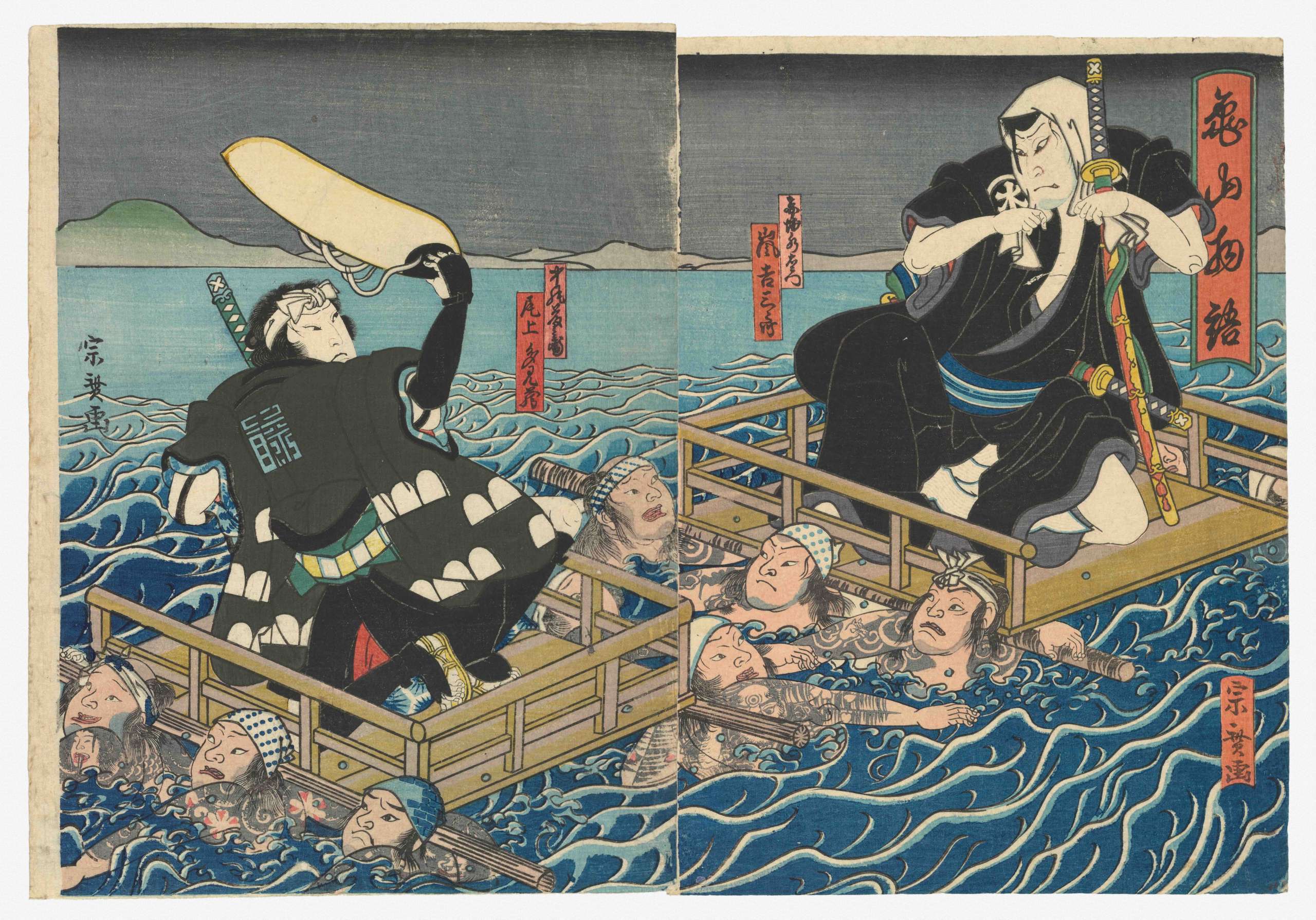
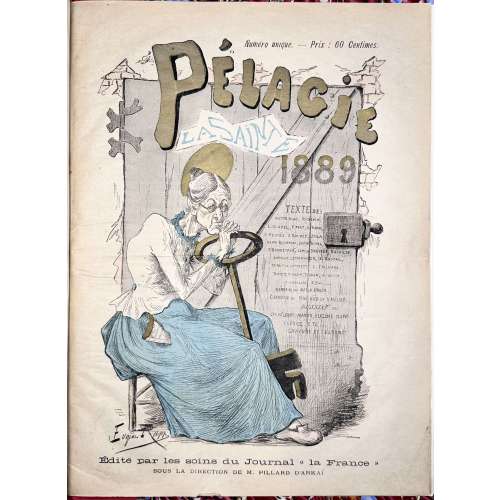
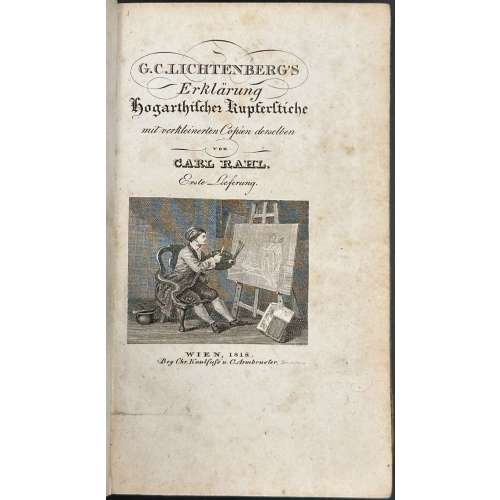
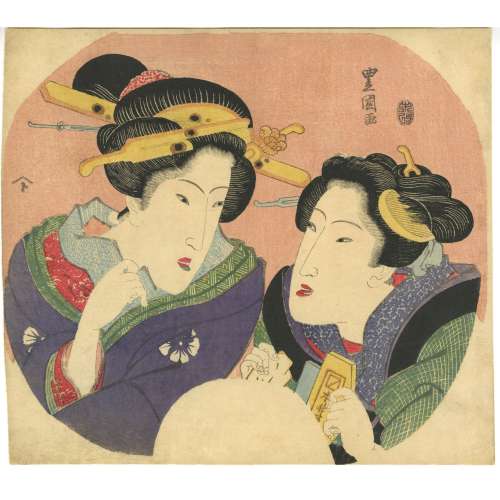
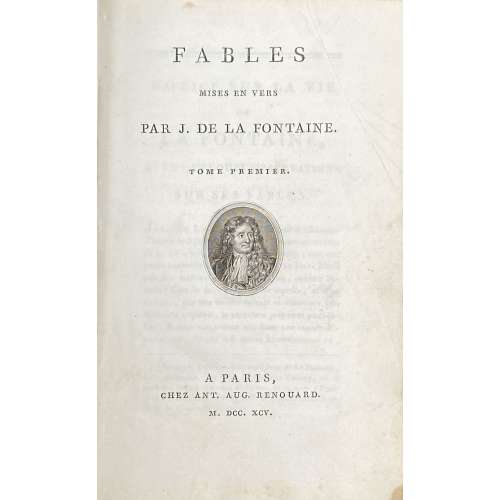
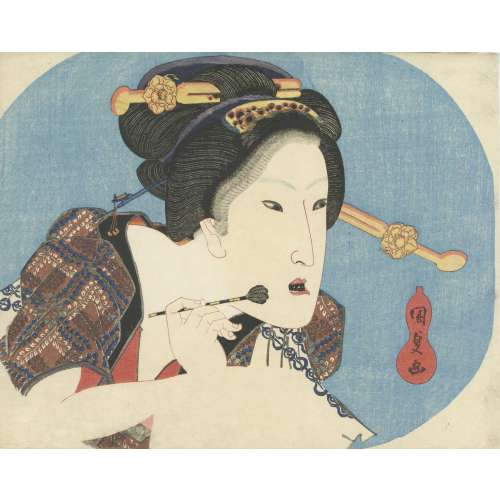
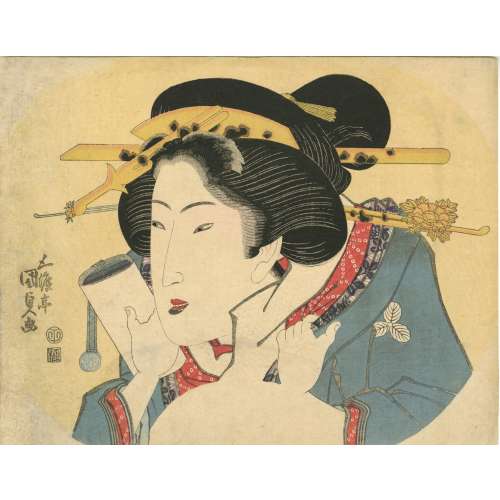
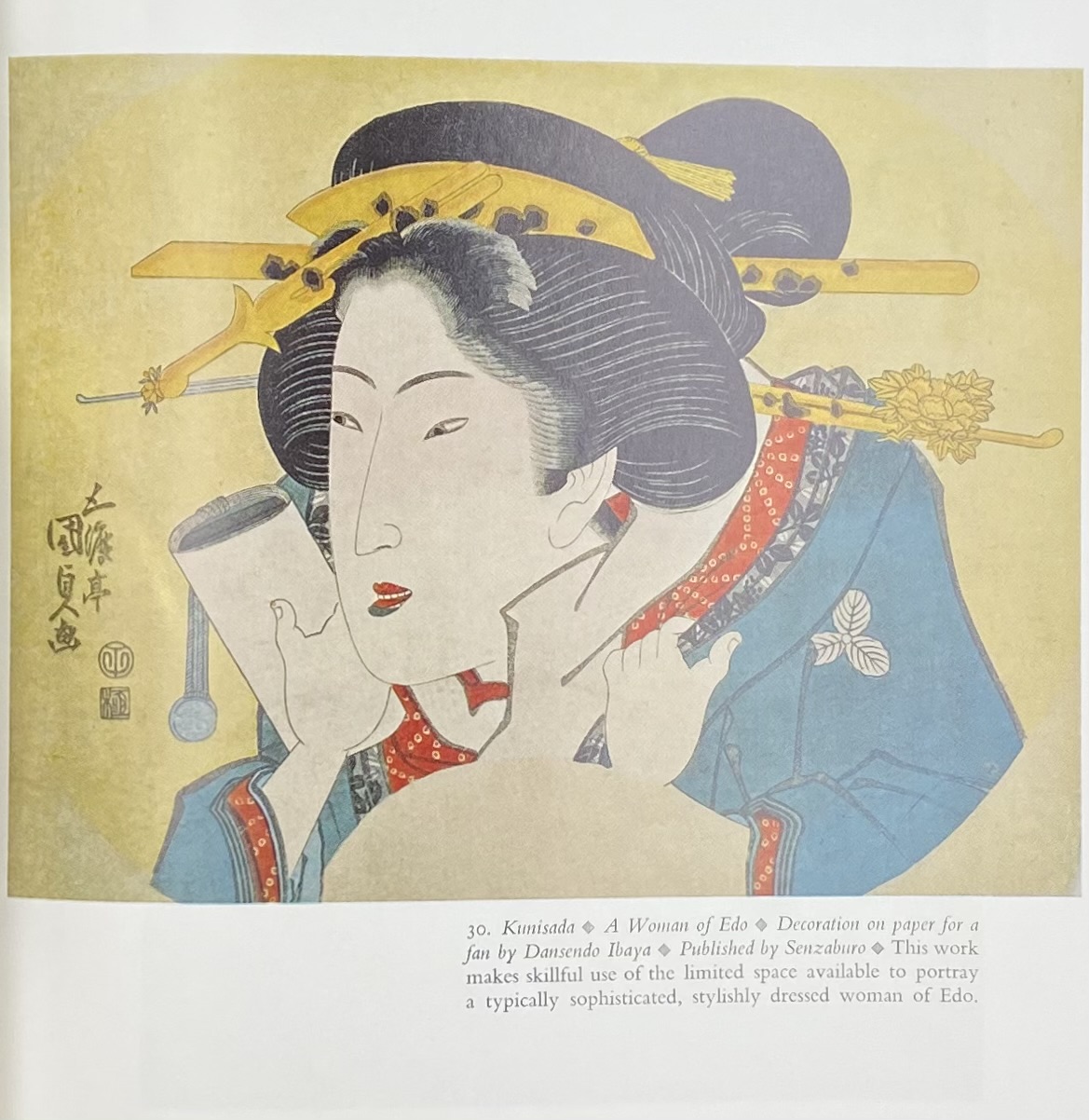
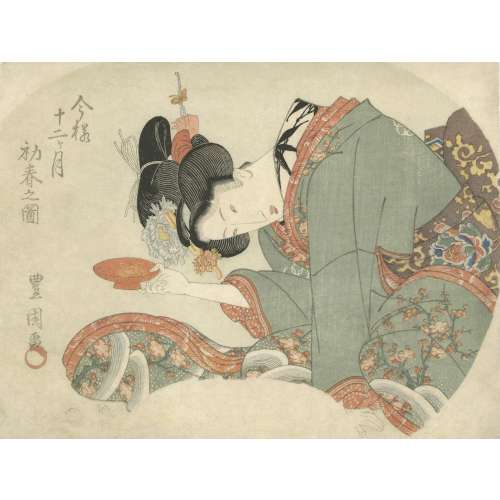
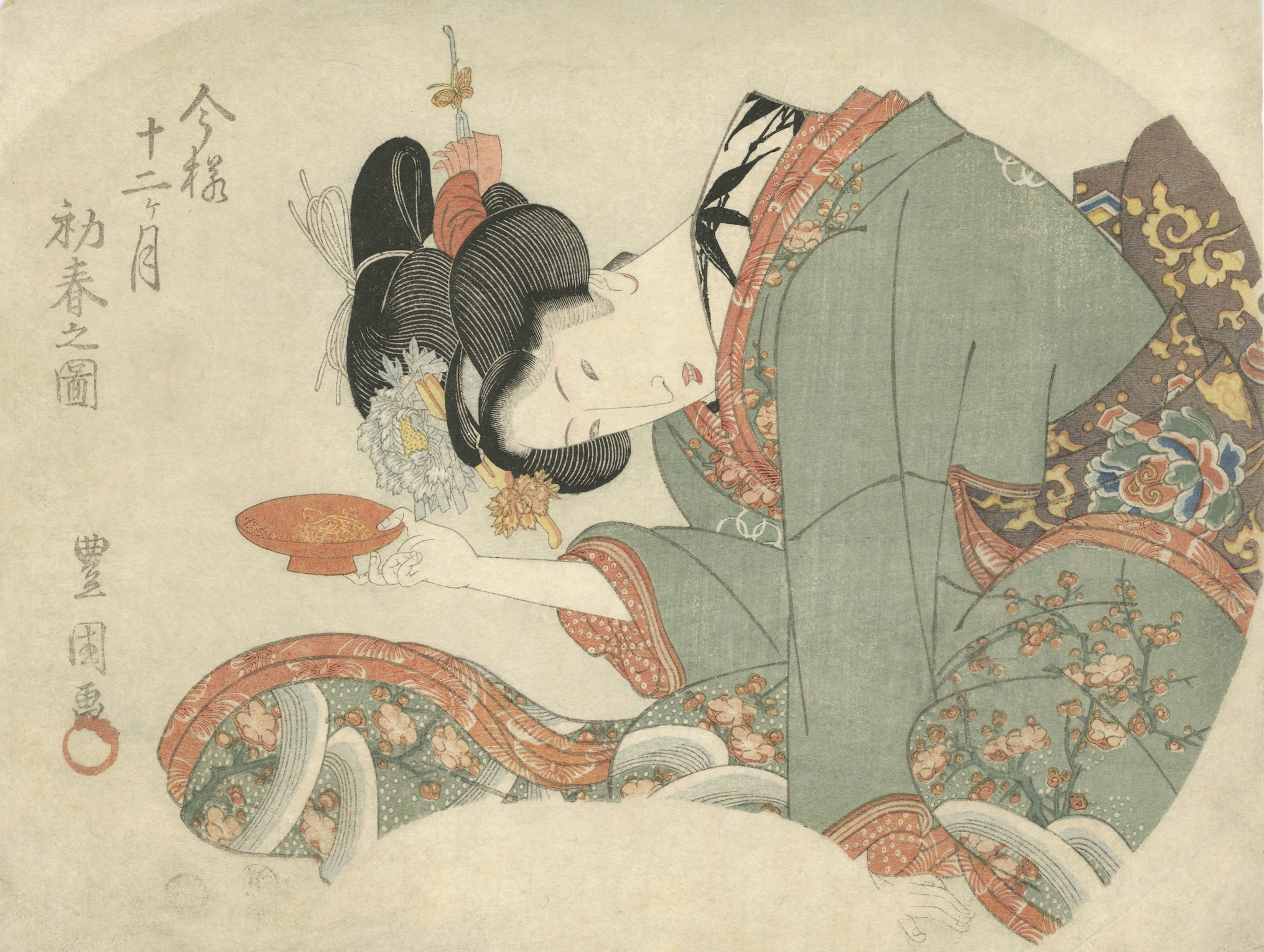
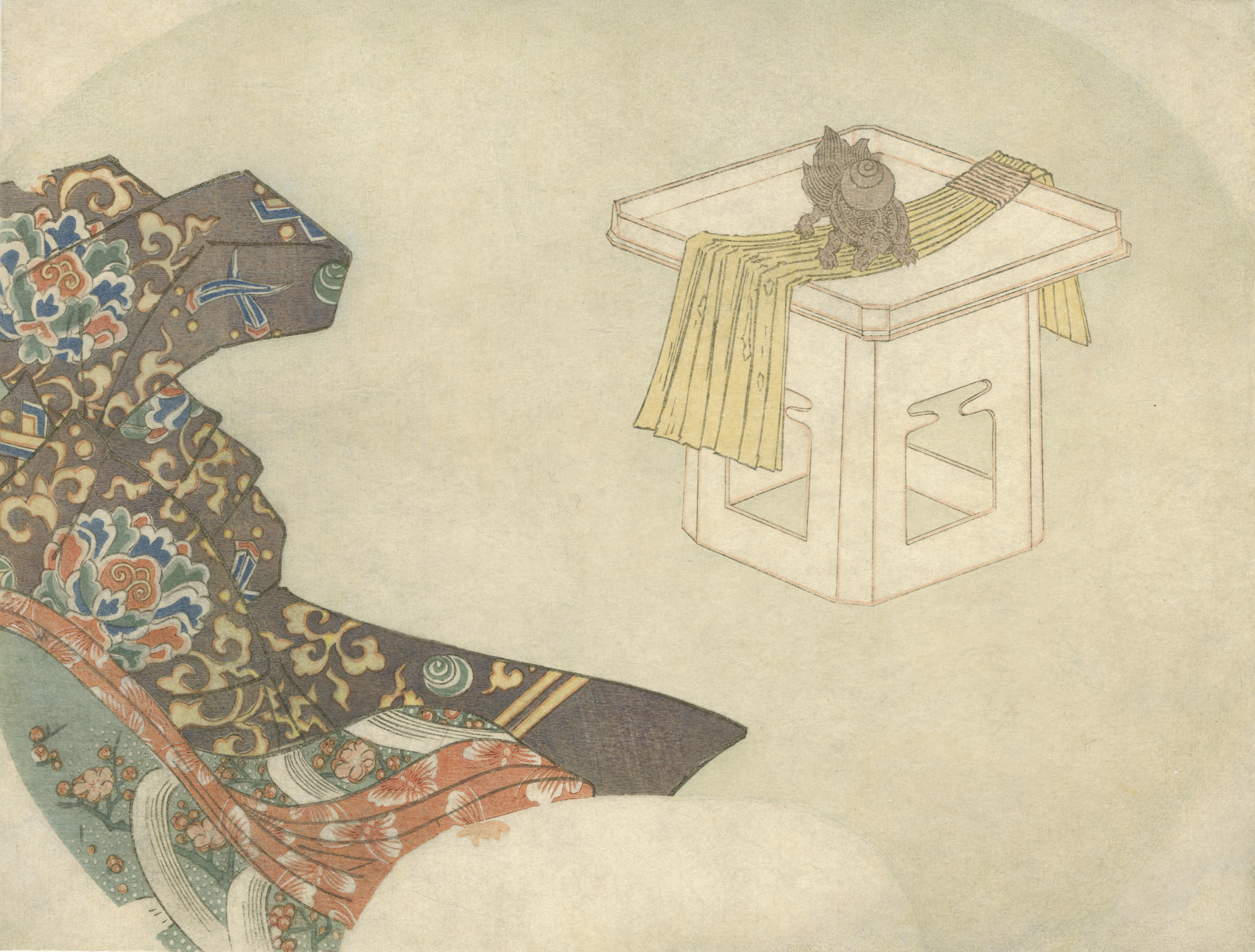
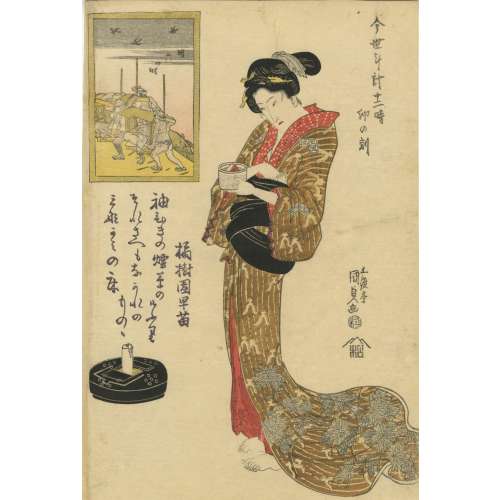
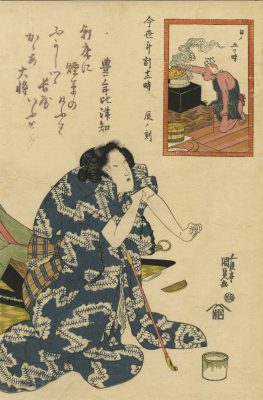
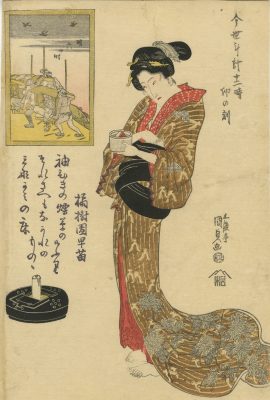
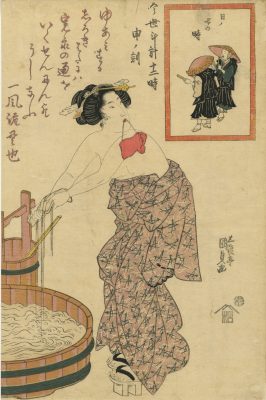
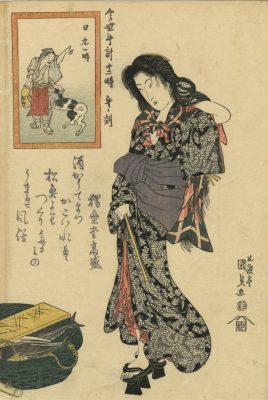
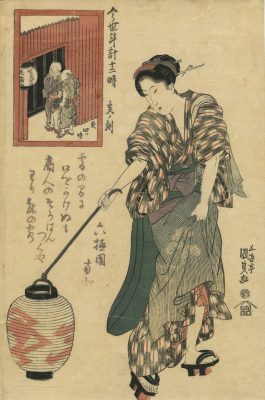
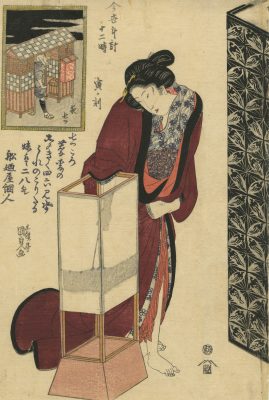
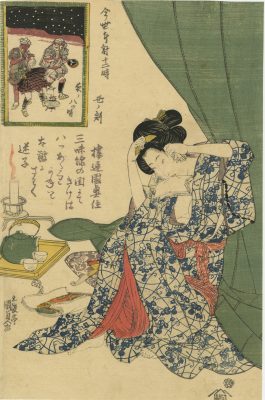
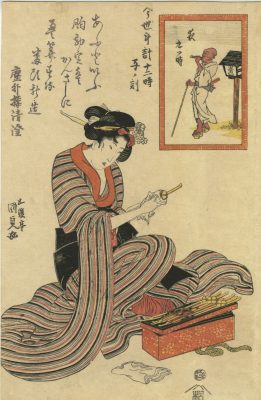
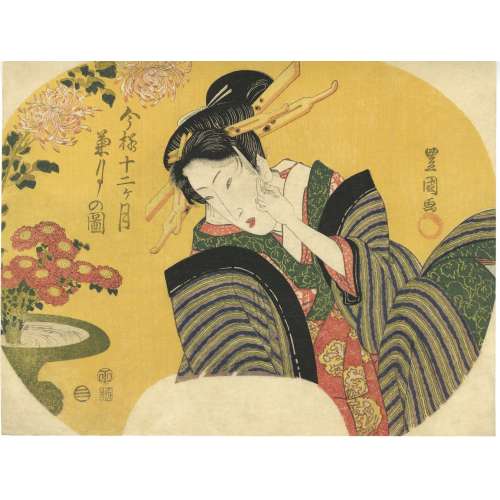
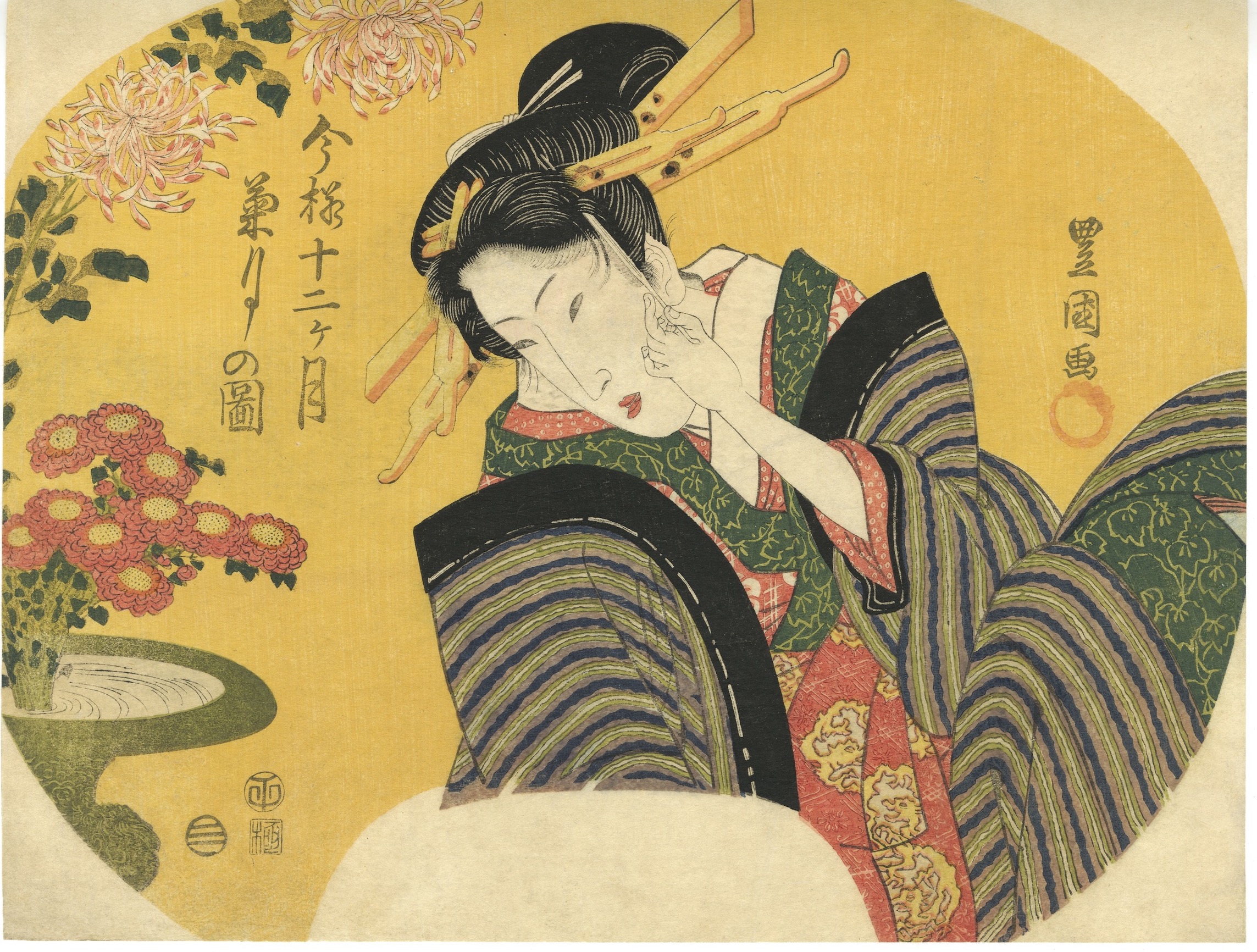
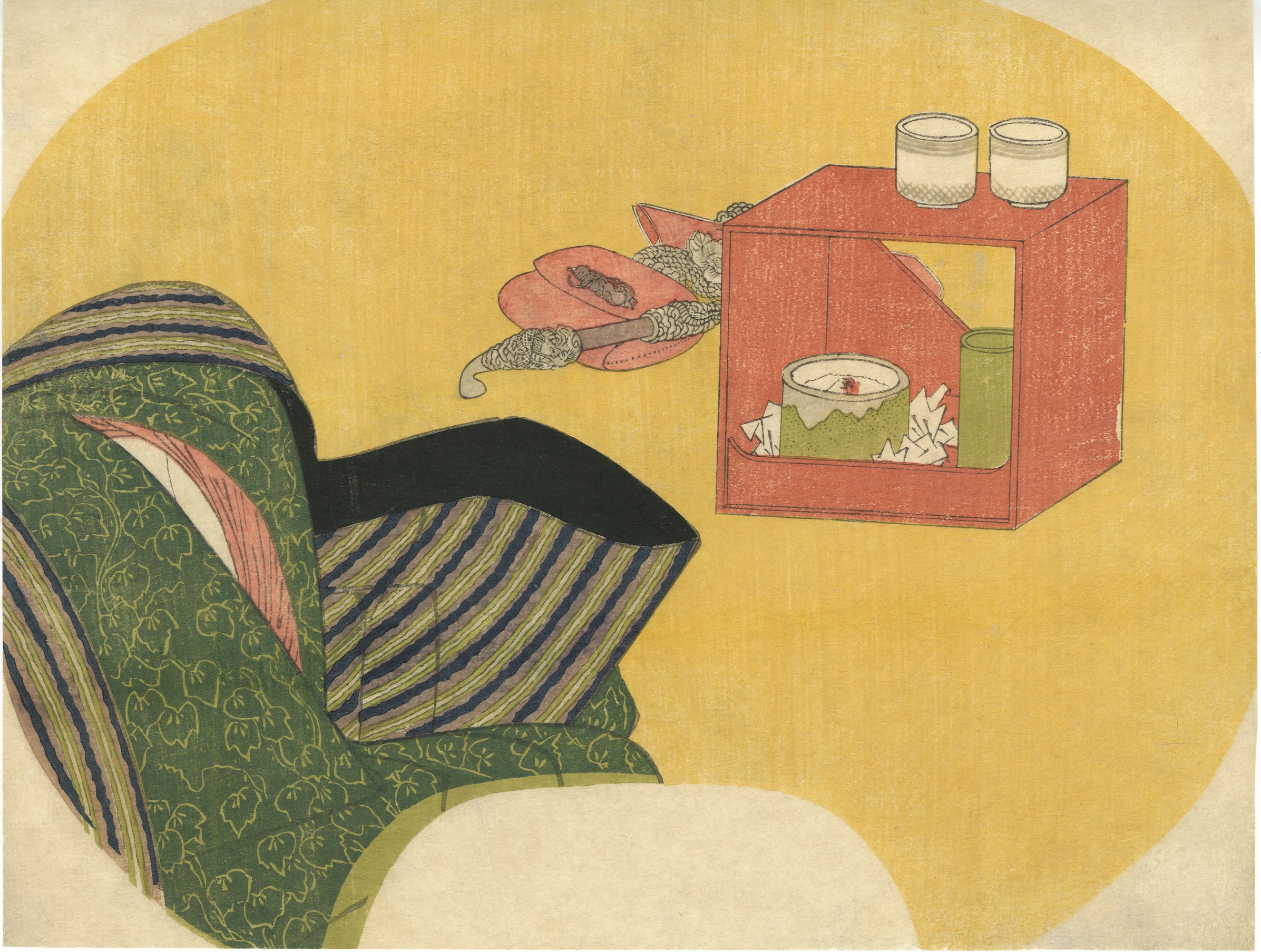
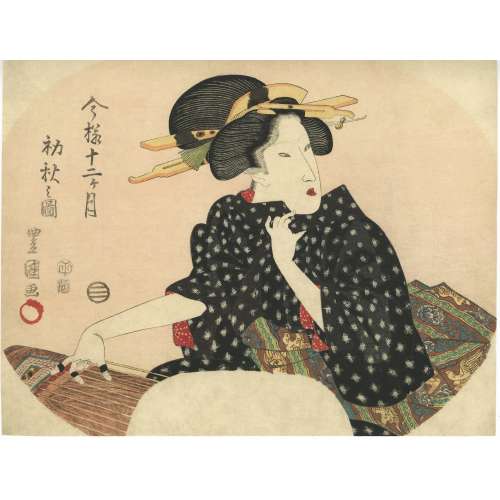
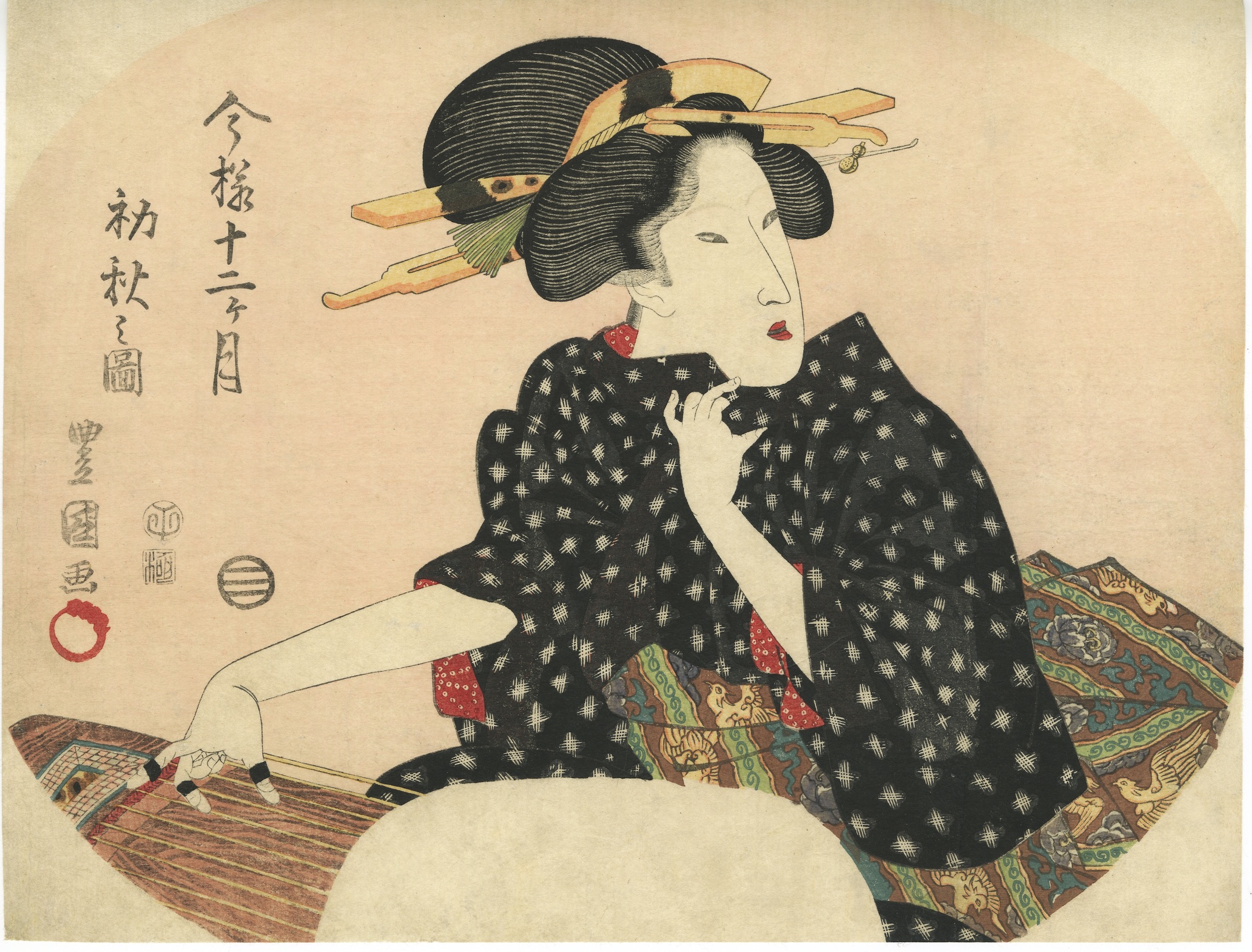
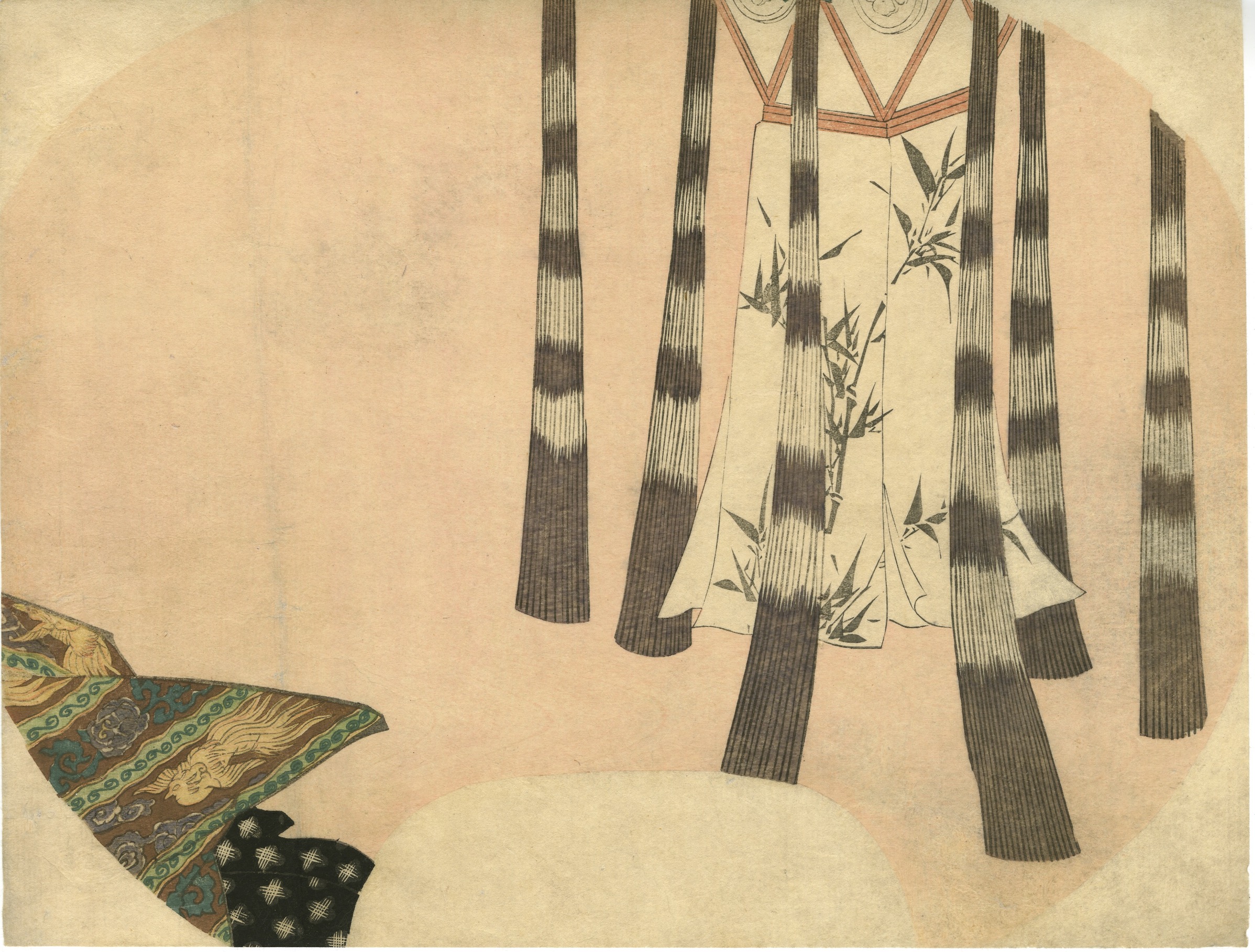
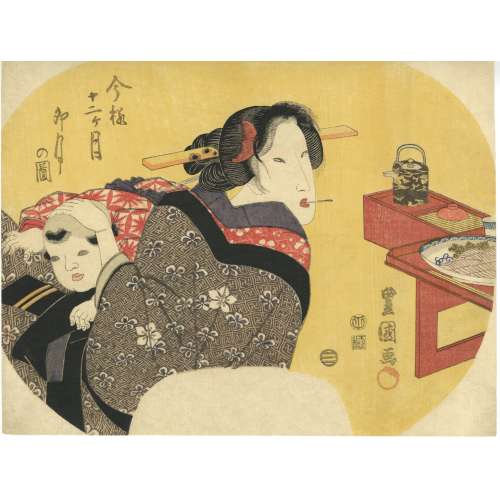
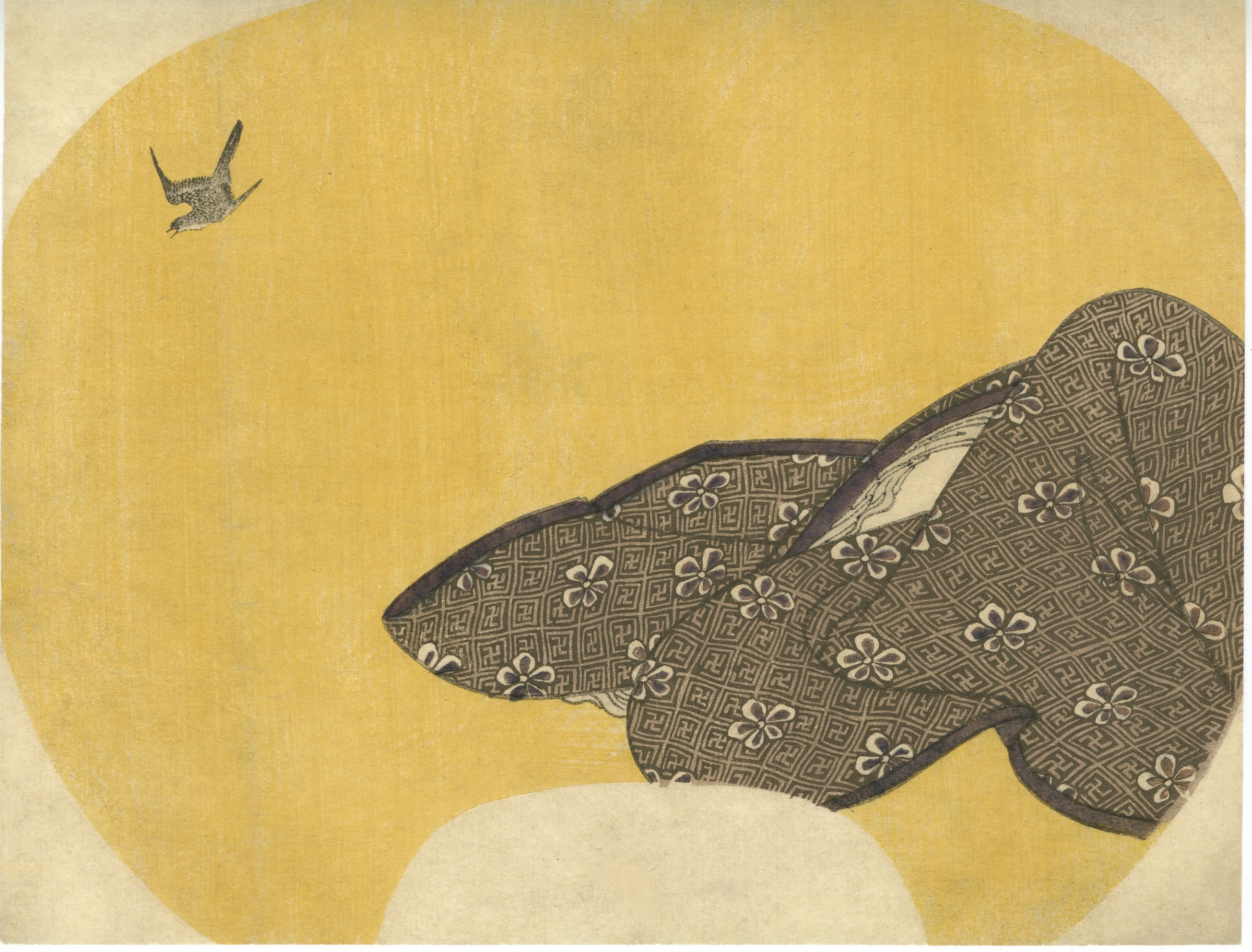
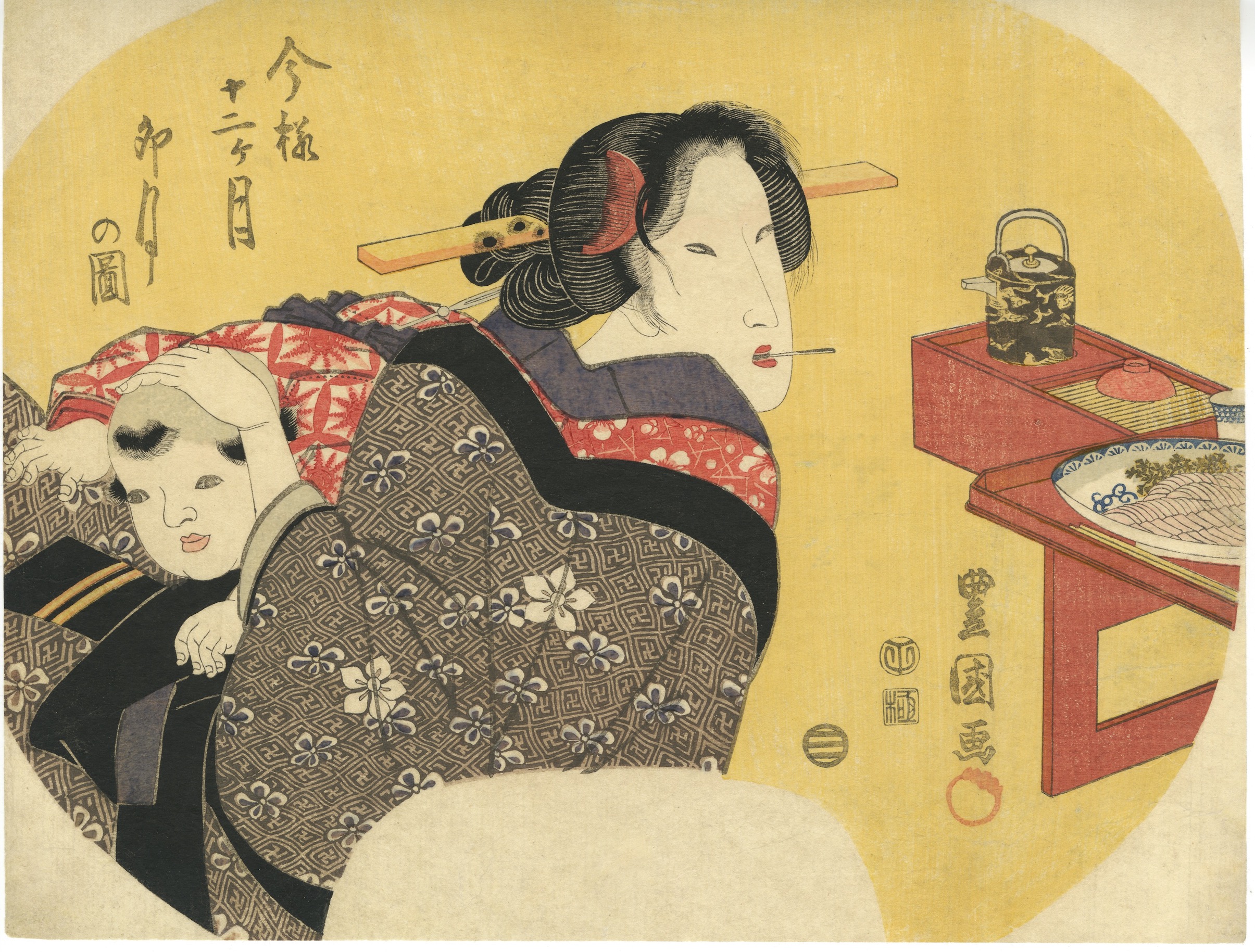
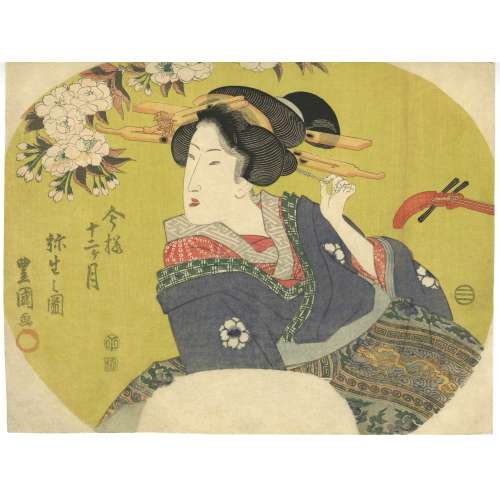
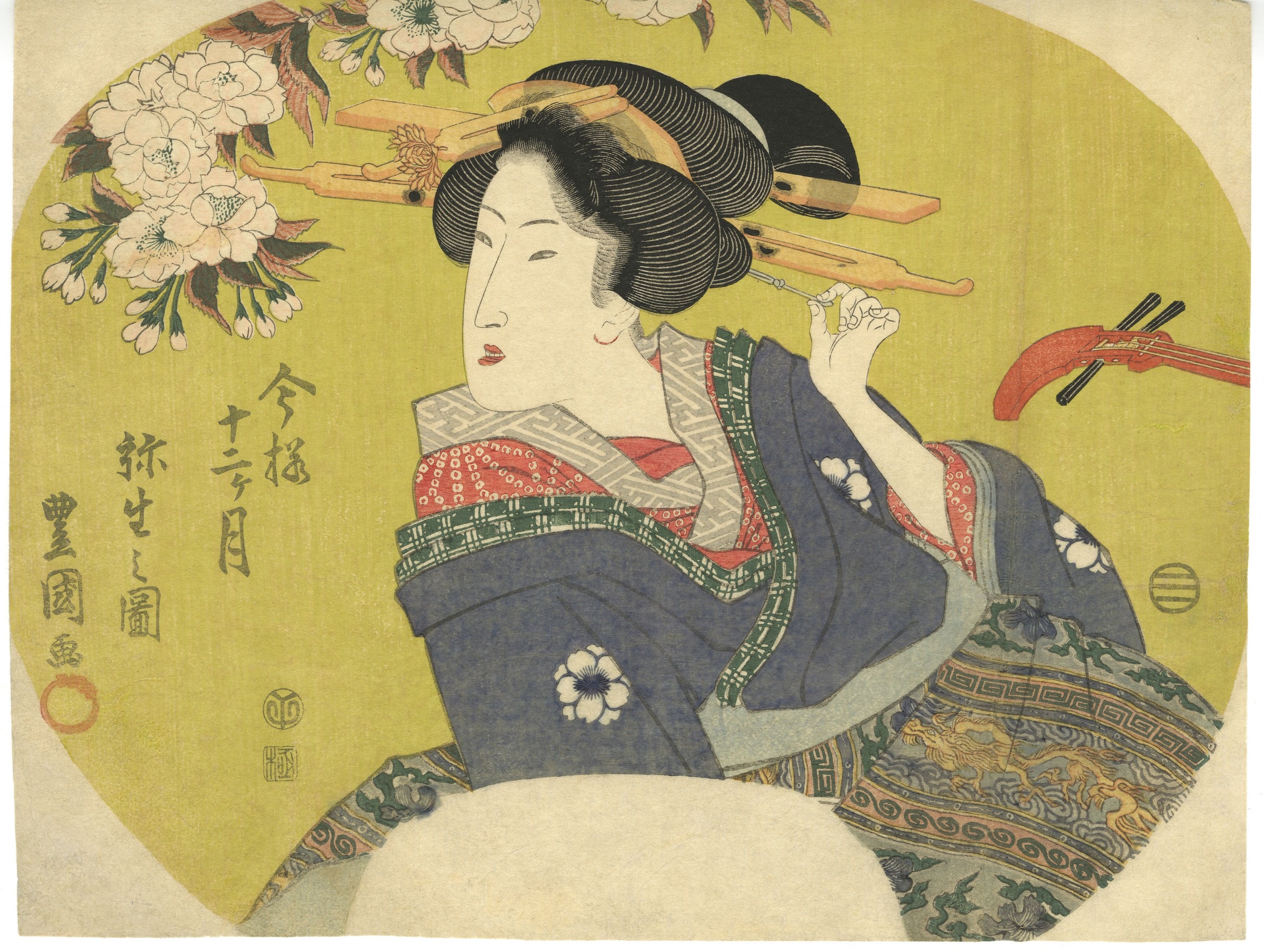
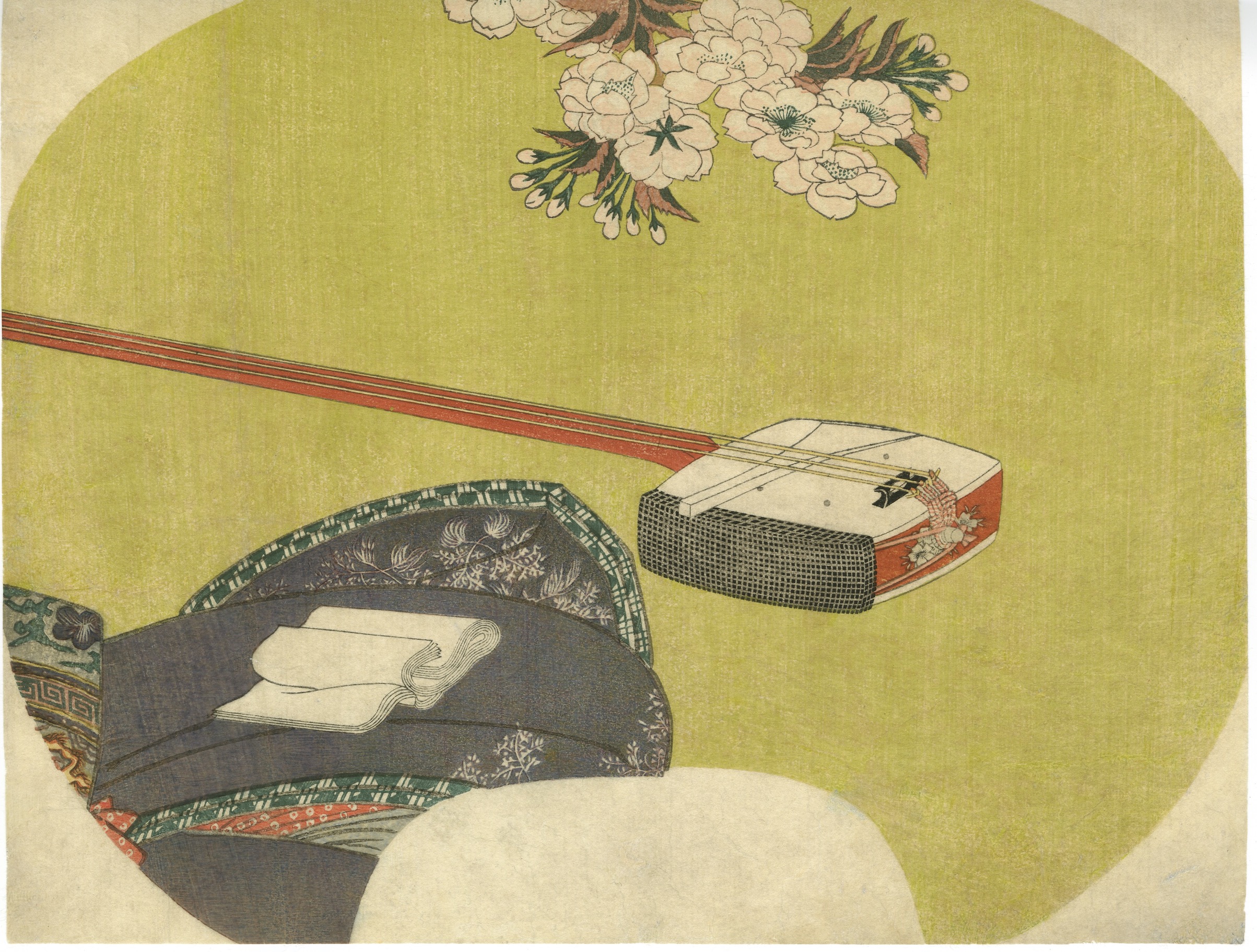
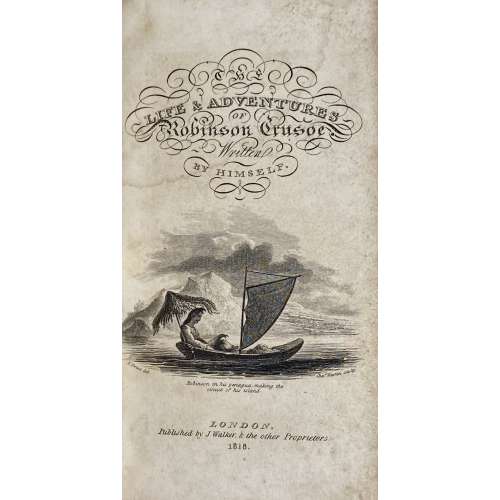
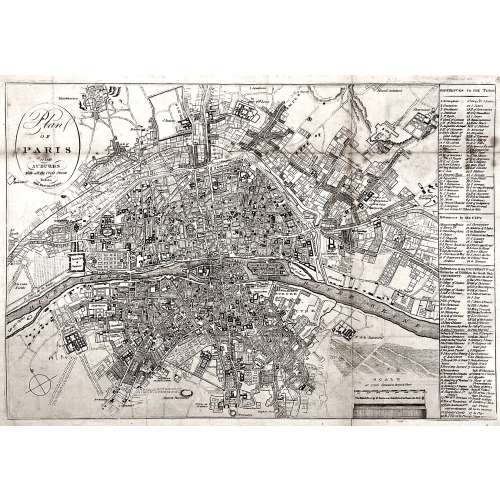
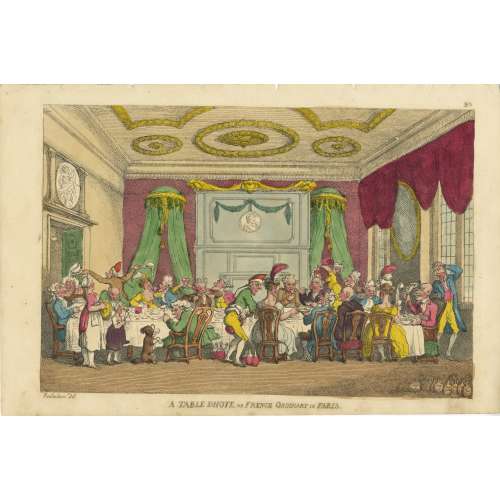
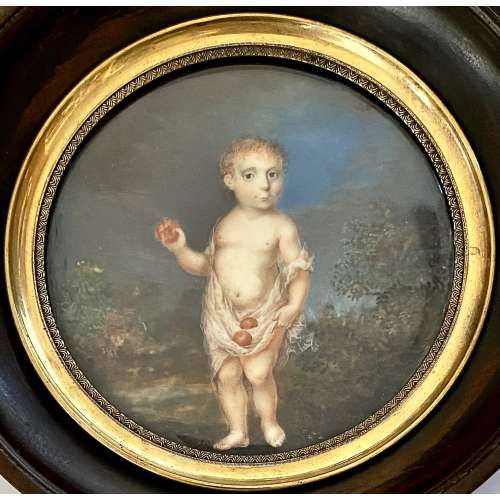
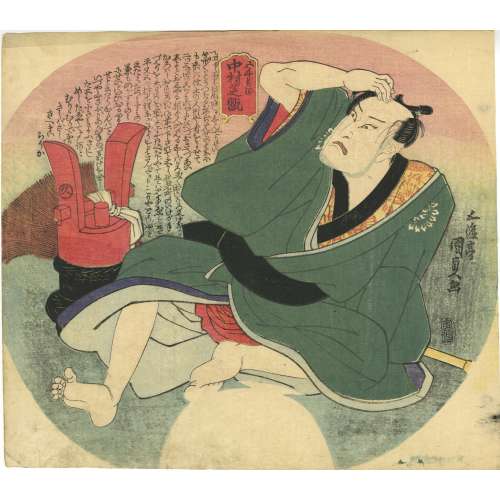
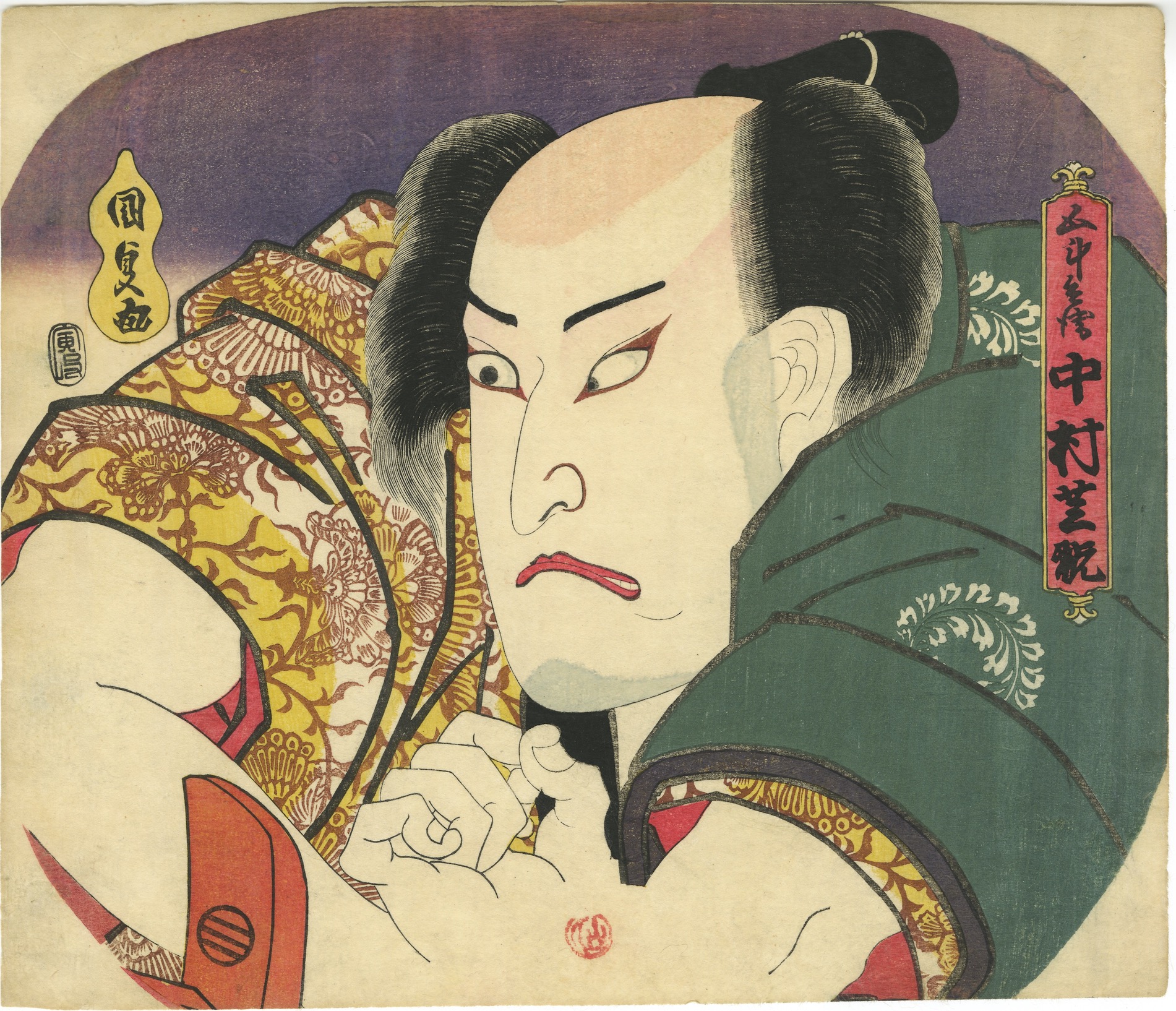 Horst Graebner also noted that the performance took place at Nakamura Theatre in Edo on Bunsei 13/03 (03/1830) (see Waseda University Cultural Resources Database #
Horst Graebner also noted that the performance took place at Nakamura Theatre in Edo on Bunsei 13/03 (03/1830) (see Waseda University Cultural Resources Database # 